Second World Summit for Social Development (WSSD-2), 2025
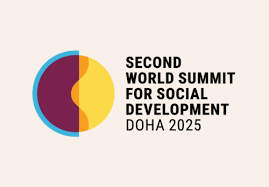
- 07 Nov 2025
In News:
The Second World Summit for Social Development (WSSD-2) is being held Doha, Qatar, under the aegis of the United Nations. India is represented at the summit by the Minister for Labour & Employment and Youth Affairs & Sports, Dr. Mansukh Mandaviya, underscoring India’s commitment to global social development and social justice.
Background and Evolution
The first World Summit for Social Development was held in Copenhagen in 1995, marking a watershed moment in global consensus on placing people-centric development at the heart of economic policy. It resulted in the Copenhagen Declaration, which laid down 10 commitments focused on poverty eradication, employment generation, and social inclusion.
Three decades later, WSSD-2 seeks to reassess global progress, address emerging challenges, and reinvigorate global solidarity in the context of widening inequalities, technological disruption, climate stress, and demographic transitions.
Objectives of WSSD-2
The summit aims to:
- Reaffirm commitment to poverty eradication, full and productive employment, and decent work for all.
- Promote social inclusion, equality, and well-being, particularly for vulnerable and marginalized groups.
- Assess gaps in implementation of social development commitments since 1995.
- Strengthen the implementation of the 2030 Agenda for Sustainable Development and the Sustainable Development Goals (SDGs).
- Reaffirm the 10 commitments of the Copenhagen Declaration.
- Enhance global cooperation and solidarity in social development.
Importantly, WSSD-2 is aligned with other key global processes, including the 2023 SDG Summit Political Declaration, the Pact of the Future, and the forthcoming Fourth International Conference on Financing for Development (FfD4), ensuring policy coherence across global development frameworks.
India’s Participation and Contributions
At the summit, Dr. Mansukh Mandaviya is participating in the Opening Plenary, delivering India’s National Statement, and joining global leaders in adopting the Doha Political Declaration, which will guide future international action on social development.
India is actively contributing to the High-Level Round Table on the Three Pillars of Social Development:
- Poverty Eradication
- Full and Productive Employment and Decent Work for All
- Social Inclusion
In this forum, India is showcasing its inclusive and digitally enabled growth model, highlighting how digital public infrastructure, financial inclusion, and targeted welfare delivery have strengthened social protection and employment outcomes.
Bilateral and Multilateral Engagements
On the sidelines of WSSD-2, India is strengthening international cooperation through bilateral meetings with representatives from Qatar, Romania, Mauritius, and the European Union, as well as interactions with the Director-General of the International Labour Organization (ILO) and senior UN officials. These engagements focus on:
- Labour mobility
- Skilling and workforce development
- Social protection frameworks
- Employment generation
Additionally, India is highlighting institutional innovations such as the National Career Service (NCS) Portal, which connects job seekers and employers, improving transparency and inclusivity in labour markets.
AmazonFACE Project

- 02 Nov 2025
In News:
- The AmazonFACE Project, launched near Manaus, Brazil, is a pioneering climate research experiment designed to study how the Amazon rainforest—the world’s largest tropical forest—responds to future elevated CO? levels. The initiative is significant as Brazil prepares to host COP30 in Belém.
- It is the first experiment of its scale in a natural tropical forest, marking a major advancement in global climate science.
What is AmazonFACE?
- A long-term field experiment exposing mature tropical trees to projected future CO? concentrations.
- Located in an old-growth Amazon forest stand.
- Aims to understand how increased atmospheric carbon affects forest functioning, carbon cycling, water exchange and overall ecosystem resilience.
Technology Used: FACE
FACE (Free-Air CO? Enrichment) technology:
- Releases controlled amounts of CO? into open-air forest environments.
- Allows real-time assessment of how trees respond without disturbing natural forest structure.
- Previously used in temperate biomes, but AmazonFACE is the first large-scale FACE experiment in tropical forests.
Structure & Working
- The site contains six large steel-ring towers, each enclosing 50–70 mature trees.
- Three rings are fumigated with CO? at concentrations matching climate projections for 2050–2060.
- Three rings act as control plots.
- Sensors record data every 10 minutes, including:
- CO? absorption
- Oxygen and water vapour release
- Responses to rainfall, sunlight, and storms
- Later stages will simulate artificial microclimates with higher atmospheric CO?.
Institutional Support
- Led by INPA (National Institute for Amazon Research) and Universidade Estadual de Campinas.
- Supported by the Brazilian federal government and the United Kingdom.
Significance
- Helps model the future behaviour of the Amazon under climate stress.
- Provides insights into:
- Carbon sequestration capacity
- Forest growth patterns
- Water cycle feedbacks
- Potential ecosystem tipping points
- Critical for global climate policymaking, especially ahead of COP30, where adaptation and mitigation strategies for the Amazon biome will be central.
Project Arunank
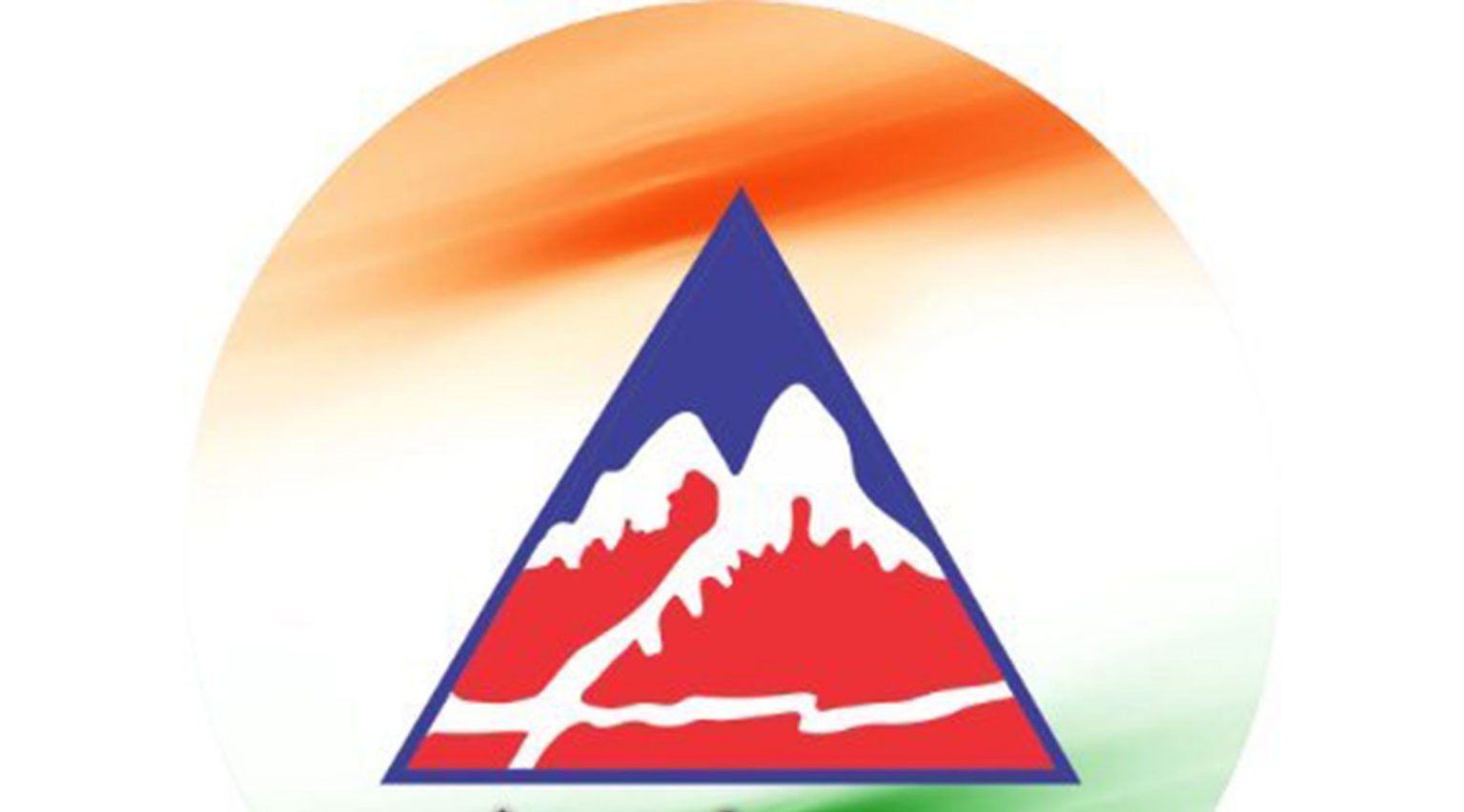
- 27 Oct 2025
In News:
Project Arunank of the Border Roads Organisation (BRO) recently celebrated its 18th Raising Day at Naharlagun, marking over 17 years of sustained infrastructure development in Arunachal Pradesh’s remote and strategic regions.
About Project Arunank
- Launched: 2008
- Implementing Agency: Border Roads Organisation (BRO), under the Ministry of Defence.
- Name Origin: Derived from the state’s name — Arunachal Pradesh.
- Objective:To enhance road connectivity in remote valleys and forward areas of Arunachal Pradesh, supporting both civilian access and the operational needs of the Indian Armed Forces.
Key Achievements
- Strategic Road Development
- Constructed and maintained over 696 km of roads and 1.18 km of major bridges across the state.
- Completed the 278 km Hapoli–Sarli–Huri Road, which was blacktopped for the first time since Independence, connecting the remote KurungKumey district — a major milestone in post-Independence connectivity.
- Technological Innovations
- Adopted modern and sustainable construction technologies, including:
- Steel Slag and GGBFS Concrete for durability.
- Cut-and-Cover Tunnels and Geo Cells for terrain stability.
- Plastic Sheets, Gabion Walls, and Slope Stabilisation Systems to prevent landslides and improve road resilience.
- These innovations promote eco-friendly and climate-resilient infrastructure in fragile Himalayan terrain.
- Adopted modern and sustainable construction technologies, including:
- Green and Welfare Initiatives
- Under the ‘Ek Ped MaaKe Naam’ campaign, over 23,850 trees were planted across Arunachal Pradesh to promote environmental conservation.
- Welfare measures for Casual Paid Labourers (CPLs) included better shelters, protective gear, and regular health camps—acknowledging their crucial contribution to BRO’s success.
- Community and Awareness Programs: Conducted a motorable expedition along the Naharlagun–Joram Top–Sangram–Ziro–Naharlagun route to promote road safety and connectivity awareness among locals and officials.
Future Plans
- Focus on road widening, construction of new bridges and tunnels, and improving all-weather, high-altitude connectivity for both civilian and defence use.
- Integration of digital monitoring tools, geotextiles, and eco-friendly materials to enhance infrastructure sustainability while reducing maintenance costs.
About the Border Roads Organisation (BRO)
- Established: 7 May 1960
- Parent Ministry: Ministry of Defence
- Mandate:To construct and maintain road networks in border areas of India and in friendly neighbouring countries to ensure defence preparedness and socio-economic development.
- The BRO has been pivotal in strategic connectivity across northern and northeastern India, including projects like Arunank (Arunachal Pradesh), Vartak (Assam & Arunachal), Himank (Ladakh), and Sampark (Jammu & Kashmir).
Impact of a Coronal Mass Ejection on the Lunar Exosphere
- 22 Oct 2025
In News:
- In a landmark discovery, the Indian Space Research Organisation (ISRO) announced that Chandrayaan-2’s orbiter has, for the first time, recorded the impact of a Coronal Mass Ejection (CME) from the Sun on theMoon’s exosphere — the thin, outermost layer of its atmosphere.
- The finding, made using the CHACE-2 (Chandra’s Atmospheric Composition Explorer-2) payload, marks a significant step in understanding how solar activity influences airless celestial bodies like the Moon.
About the Observation
- The CHACE-2 instrument, aboard Chandrayaan-2’s orbiter, detected a sharp rise in total pressure and molecular density in the Moon’s sunlit exosphere during a CME event on 10 May 2024.
- This observation confirmed, for the first time, theoretical predictions about how high-energy solar emissions affect the Moon’s extremely tenuous atmosphere.
- The findings were published in the journal Geophysical Research Letters (August 2025) under the title “Impact of a Coronal Mass Ejection on the Lunar Exosphere as Observed by CHACE-2 on the Chandrayaan-2 Orbiter.”
Understanding Coronal Mass Ejections (CMEs)
- CMEs are massive bursts of charged particles — primarily ionized hydrogen and helium — ejected from the Sun’s corona.
- When directed toward planetary bodies, these particles can interact with their atmospheres or surfaces, causing chemical and physical changes.
- On Earth, CMEs are often linked with geomagnetic storms and auroras, but their influence on airless bodies like the Moon had remained largely unobserved until this study.
The Lunar Exosphere: Nature and Composition
- The Moon’s atmosphere is so thin that it is classified as an exosphere — a region where individual gas atoms and molecules rarely collide.
- The boundary of the lunar exosphere directly touches the Moon’s surface, making it a “surface-boundary exosphere.”
- It is primarily composed of trace elements such as helium, argon, sodium, and potassium, released through processes like:
- Solar wind interactions (bombardment by charged particles),
- Photon-stimulated desorption (solar radiation freeing surface atoms), and
- Micrometeorite impacts (which vaporize surface material).
- Since the Moon lacks a global magnetic field, its exosphere is directly exposed to solar wind and CMEs, making it a natural laboratory for studying space-weather effects.
Chandrayaan-2 Mission Overview
- Launch Date: 22 July 2019, by GSLV-Mk III-M1 from Sriharikota.
- Components: Orbiter, Lander (Vikram), and Rover (Pragyan).
- Although communication with the lander was lost during descent on 7 September 2019, the orbiter remains fully operational in a 100 km × 100 km lunar orbit.
- Objective of CHACE-2: To analyse the composition, distribution, and temporal variability of the Moon’s neutral exosphere.
Key Findings of the Observation
- During the May 2024 CME event, CHACE-2 recorded a ten-fold increase in the number density of neutral atoms and molecules in the Moon’s dayside exosphere.
- The total pressure in the exosphere rose sharply, indicating enhanced release of surface atoms due to direct CME particle bombardment.
- The results provided empirical validation for long-held theoretical models on solar-lunar interactions.
- This was the first direct evidence of how the Moon’s atmospheric conditions respond dynamically to solar events.
Significance of the Discovery
- Scientific Advancement:
- Deepens understanding of space weather phenomena and their effects on airless celestial bodies.
- Offers valuable insights into Sun–Moon interactions and how charged solar particles shape planetary exospheres.
- Operational Relevance:
- Enhances the ability to predict and model space-weather impacts on future lunar missions and human habitats planned by 2040.
- Helps design radiation-resistant systems for lunar surface operations.
- Strategic and Technological Implications:
- Reinforces India’s growing expertise in planetary science and space environment monitoring.
- Demonstrates the long-term operational success of the Chandrayaan-2 orbiter, even years after its launch.
- Global Collaboration Potential:The findings can inform international lunar missions, including NASA’s Artemis and JAXA’s SLIM, contributing to a shared understanding of lunar space weather dynamics.
MAM01 Monoclonal Antibody

- 22 Oct 2025
In News:
- A major scientific breakthrough has emerged in the global fight against malaria, with U.S. researchers developing a novel monoclonal antibody (mAb) named MAM01, which has shown strong protection in early human trials.
- The results, published in The Lancet Infectious Diseases, mark a potential shift toward antibody-based malaria prevention, especially for vulnerable groups such as young children and pregnant women in endemic regions.
About MAM01 Monoclonal Antibody
- MAM01 is a laboratory-engineered monoclonal antibody designed to prevent malaria infection by targeting a highly conserved region of the Plasmodium falciparumcircumsporozoite protein (CSP) — a key molecule involved in the parasite’s entry into the bloodstream.
- By binding to this protein, MAM01 blocks infection at the earliest stage, preventing the parasite from reaching the liver or bloodstream.
Key Features
- Mode of Administration: A single injection of this long-acting antibody provides immediate protection lasting for several months.
- Target Groups: Especially beneficial for infants, young children, and pregnant women living in malaria-endemic regions.
- Duration of Protection: The antibody offers dose-dependent, months-long immunity with minimal side effects.
- Mechanism: MAM01 neutralizes the malaria parasite before it can infect liver cells, thus halting disease progression at the pre-erythrocytic stage.
Findings from the Clinical Trial
- Institution: Conducted by the University of Maryland School of Medicine’s Center for Vaccine Development and Global Health (CVD).
- Trial Design: A Phase 1, double-blind, placebo-controlled clinical study involving 38 healthy adult volunteers (aged 18–50) with no prior malaria exposure.
- Method: Participants were given either MAM01 or a placebo and later exposed to malaria-carrying mosquitoes in a controlled challenge study.
- Results:
- Participants receiving the highest dose of MAM01 showed complete protection from infection.
- All individuals in the placebo group developed malaria.
- No serious side effects or adverse events were reported.
- Outcome: The antibody demonstrated dose-dependent protection and a strong safety profile, providing proof-of-concept for antibody-based malaria prevention.
About Monoclonal Antibodies (mAbs)
Monoclonal antibodies are laboratory-made proteins that mimic the body’s natural immune response.
- Origin: Produced by cloning a single type of B cell to generate identical copies of an antibody.
- Specificity: Highly precise, designed to bind to a particular antigen such as a virus, bacterium, or parasite.
- Applications: Widely used in the treatment of cancer, autoimmune disorders, and infectious diseases (e.g., COVID-19, Ebola).
- Advantage: Offer targeted action with minimal side effects, and can provide immediate protection, unlike vaccines which require time for immunity to develop.
Significance of the Discovery
- A New Preventive Strategy: Unlike vaccines that may require multiple doses and boosters, MAM01 provides immediate and prolonged protection through a single dose — ideal for high-risk populations in malaria-endemic areas.
- Addressing a Global Health Burden: Malaria continues to cause over 600,000 deaths annually, predominantly among children in sub-Saharan Africa. Limited vaccine efficacy and emerging drug resistance make monoclonal antibodies a valuable addition to the malaria control toolkit.
- Technological and Health Equity Impact: This research demonstrates how cutting-edge biotechnological innovation can serve global health equity by providing affordable, scalable, and effective protection for populations in low- and middle-income countries.
- Complementary to Vaccines: MAM01 complements existing malaria vaccines like RTS,S (Mosquirix) and R21/Matrix-M, offering a dual-layered protection strategy — antibodies for immediate defence and vaccines for long-term immunity.
Chiron
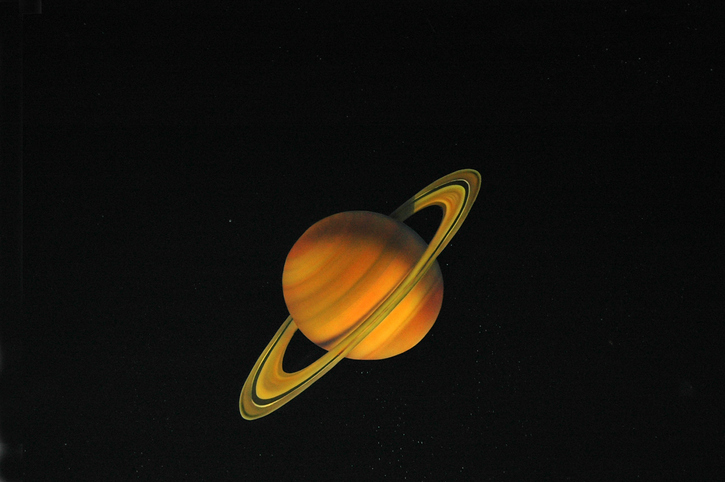
- 18 Oct 2025
In News:
Astronomers have, for the first time, observed the formation and evolution of a ring system around Chiron—an icy small body in the outer Solar System. This marks a significant development in planetary science, offering rare insight into ring-formation processes beyond giant planets.
About Chiron
- Discovery: Identified in 1977 by astronomer Charles Kowal.
- Classification: Belongs to the centaur class—objects orbiting between Jupiter and Neptune that exhibit traits of both asteroids and comets.
- Orbit: Completes one revolution around the Sun in ~50 years.
- Size: Approx. 200 km in diameter.
- Composition: Predominantly rock, water ice, and complex organic compounds.
- Behaviour: Shows comet-like activity, sometimes ejecting gas and dust.
Ring System Around Chiron
- First confirmed ring formation observed around a small icy body.
- Comprises four rings, with three inner rings embedded in a dust-disk and an outer ring located unusually far from the body.
- Rings likely contain water-ice particles mixed with rocky material, similar to Saturn’s rings.
- Observations from 2011 to 2023 indicate dynamic evolution of the ring system.
Distances of Rings From Chiron's Center (Approx.):
- Inner Rings: ~273 km, ~325 km, ~438 km
- Outer Ring: ~1,400 km (requires further stability confirmation)
Significance of the Discovery
- Provides a real-time snapshot of ring evolution, offering clues to:
- Formation mechanisms of rings around small bodies
- Dynamics of dust-disk systems in space
- Broader processes that form moons and debris structures
- Enhances understanding of small-body systems, complementing prior ring discoveries around:
- Chariklo(centaur)
- Haumea
- Quaoar
How Was It Observed?
Researchers used stellar occultation—studying changes in starlight as Chiron passed in front of a distant star. Data from Brazil, France, and Spain enabled high-precision observations.
Possible Origins of the Rings
Hypotheses include:
- Remnants of a destroyed moon
- Collisional debris from impacts with space material
- Material ejected by Chiron itself
- Or a combination of these processes
Water-ice plays a key stabilizing role by preventing particles from clumping into a moon.
Live Cases Dashboard of the Legal Information Management and Briefing System (LIMBS)

- 16 Oct 2025
In News:
The Union Minister of State (Independent Charge) for Law and Justice recently inaugurated the Live Cases Dashboard under the Legal Information Management and Briefing System (LIMBS) at Shastri Bhawan, New Delhi. This marks a key advancement in the government's efforts to enhance transparency, efficiency, and coordination in legal case management.
About the Live Cases Dashboard
- A digital interface providing real-time visualisation of court cases involving the Government of India.
- Displays upcoming hearings — particularly cases scheduled within the next seven days — across the Supreme Court, High Courts, and other judicial bodies.
- Enables proactive decision-making and inter-ministerial coordination, helping departments prepare timely responses.
About LIMBS
- Web-based application designed to monitor litigation where the Union of India is a party.
- Launched for central ministries, departments, CPSUs and autonomous bodies in 2016, with a major upgrade in January 2020.
- Operates under the Department of Legal Affairs, Ministry of Law & Justice.
- Allows 24x7 access to government officials, advocates, arbitrators, nodal officers, and ministry users to upload and track case information.
- Offers a dashboard-based system providing a snapshot of legal matters to each stakeholder institution.
Significance
- The Government of India remains one of the largest litigants.
- LIMBS and its Live Cases Dashboard aim to reduce litigation burden in line with the vision of “Minimum Litigation, Maximum Governance”.
- Enhances transparency, accountability, and judicial efficiency.
- Promotes data-driven governance, timely legal response, and improved public resource management.
India’s National Red List Roadmap
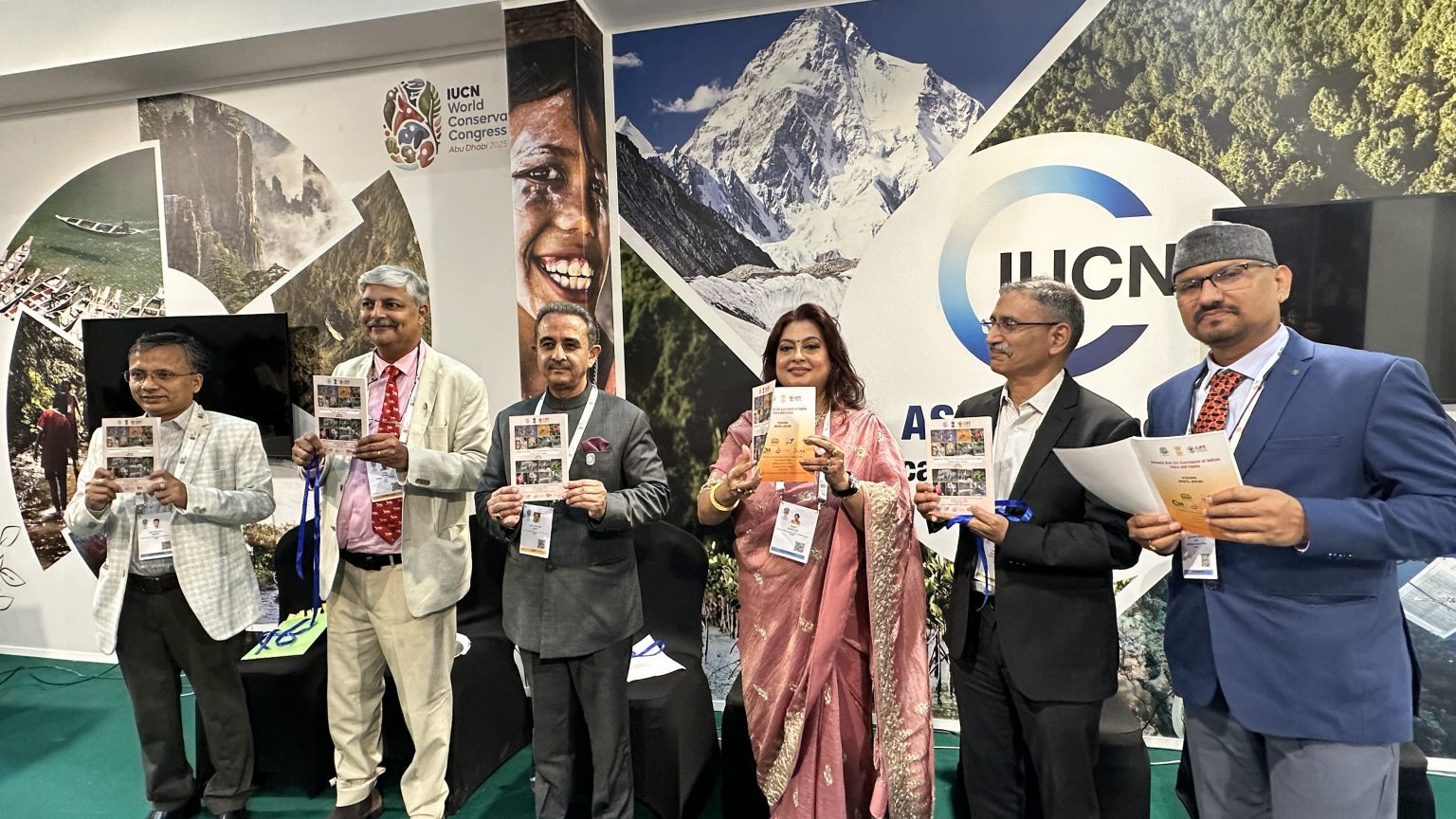
- 12 Oct 2025
In News:
At the IUCN World Conservation Congress 2025 in Abu Dhabi, India launched its National Red List Roadmap and Vision 2025–2030, marking a significant milestone in national biodiversity documentation and conservation policy. The initiativerepresents India’s commitment to establishing a comprehensive, science-based framework for assessing species and shaping long-term conservation priorities.
The National Red List Roadmap: Overview and Objectives
The National Red List Roadmap is India’s first integrated national initiative to identify, classify, and conserve threatened species across ecosystems — terrestrial, freshwater, and marine — in alignment with IUCN global standards.
It seeks to:
- Develop a nationally coordinated and inclusive red-listing system for flora and fauna.
- Generate baseline data and threat assessments to guide evidence-based policymaking.
- Strengthen India’s obligations under the Convention on Biological Diversity (CBD) and the Kunming–Montreal Global Biodiversity Framework (KMGBF).
- Foster collaboration among scientists, conservationists, and local communities to ensure equitable biodiversity protection.
The programme will culminate in the publication of India’s National Red Data Books for flora and fauna by 2030, creating an authoritative reference for conservation planning.
Institutional Collaboration
The roadmap is jointly prepared by:
- Zoological Survey of India (ZSI)
- Botanical Survey of India (BSI)
- IUCN-India, and
- Centre for Species Survival (CSS), India
This inter-agency collaboration ensures a unified system that combines scientific taxonomy, digital technology, and local knowledge systems to monitor and protect India’s biological diversity.
Vision 2025–2030: India’s Strategic Conservation Blueprint
The Vision 2025–2030 document provides a forward-looking framework to guide biodiversity governance over the next decade. It focuses on data-driven conservation, institutional synergy, and community participation, aligning with the UN Sustainable Development Goals (SDGs) and KMGBF targets.
Key Objectives:
- Establish a centralised biodiversity database for national-level coordination.
- Enhance species identification and taxonomy through expert collaboration.
- Integrate digital tools, GIS mapping, and field surveys for real-time species monitoring.
- Build a network connecting scientific institutions, local communities, and policymakers.
- Promote inclusive and equitable participation of indigenous and local communities in conservation processes.
By 2030, India aims to complete comprehensive species assessments, update threat categories, and integrate the results into national wildlife action plans and climate strategies.
India’s Biodiversity Profile
India is recognised as one of the 17 megadiverse countries in the world and hosts four of the 36 global biodiversity hotspots — the Himalayas, Western Ghats, Indo-Burma, and Sundaland.
Key Statistics:
- Covers 2.4% of global land area but supports nearly 8% of global flora and 7.5% of global fauna.
- Houses over 104,000 faunal species, 18,000 species of flowering plants, and around 20,000 marine species.
- Approximately 28% of plant species and 30% of animal species are endemic to India.
These figures underscore India’s ecological richness and the urgency for systematic monitoring and protection.
Legal and Policy Backing
- The initiative aligns with India’s robust legal framework for biodiversity conservation, anchored in the Wild Life (Protection) Act, 1972, which was amended in 2022 to extend protection to species listed under the CITES Appendices.
- The National Red List Roadmap will complement existing programmes like the National Biodiversity Mission, National Wildlife Action Plan, and Integrated Development of Wildlife Habitats, ensuring that conservation decisions are guided by scientific evidence and threat analysis.
Significance for Conservation Policy
- Evidence-Based Decision-Making: The roadmap institutionalises data-backed conservation planning.
- National Accountability: Regular species assessments will help monitor progress under national and global biodiversity targets.
- Scientific Collaboration: Encourages coordination among researchers, policymakers, and conservation agencies.
- Public Engagement: Integrates traditional ecological knowledge and community-driven documentation.
- Global Alignment: Reinforces India’s commitment to the Kunming–Montreal Global Biodiversity Framework and CBD Aichi Targets.
PM-SETU Scheme
- 08 Oct 2025
In News:
- Prime Minister Narendra Modi launched a series of youth-focused initiatives worth over ?62,000 crore, aimed at empowering India’s young population through education, skill development, and entrepreneurship.
- The announcements were made during the Kaushal DeekshantSamaroh held at Vigyan Bhawan, New Delhi, marking a significant step toward building a future-ready workforce aligned with global skill demands.
Pradhan Mantri Skilling and Employability Transformation through Upgraded ITIs (PM–SETU)
The centrepiece of the event was the launch of the PM–SETU scheme — a centrally sponsored initiative with an investment of ?60,000 crore. The scheme seeks to revitalize Industrial Training Institutes (ITIs) across India, transforming them into modern, industry-linked centers of skill excellence.
Key Features of PM–SETU
- Coverage: Transformation of 1,000 Government ITIs into modern, technology-driven institutes.
- Implementation Model:
- Based on a Hub-and-Spoke structure, comprising 200 hub ITIs connected to 800 spoke ITIs.
- Hub ITIs will host innovation centers, incubation units, production facilities, and training-of-trainers setups.
- Spoke ITIs will extend outreach, ensuring skill accessibility to smaller towns and semi-urban regions.
- Curriculum and Industry Linkage:
- Introduction of new demand-driven courses and modernization of existing ones in collaboration with industry partners.
- Establishment of Special Purpose Vehicles (SPVs) with anchor industries to ensure cluster-based training and employability outcomes.
- Academic Integration: Creation of pathways for short-term training, executive programs, and long-term diploma courses to align with higher education and employment opportunities.
- Centres of Excellence: Strengthening of five National Skill Training Institutes—
- Bhubaneswar (Odisha)
- Chennai (Tamil Nadu)
- Hyderabad (Telangana)
- Kanpur (Uttar Pradesh)
- Ludhiana (Punjab)
These will serve as global-level Centres of Excellence through partnerships with leading international institutions.
- Global Collaboration: The initiative is co-financed by the World Bank and the Asian Development Bank (ADB), with the first phase focusing on Patna and Darbhanga ITIs in Bihar.
Other Youth-Focused Announcements
- Vocational Skill Labs: Inauguration of 1,200 vocational skill labs across 400 Jawahar Navodaya Vidyalayas (JNVs) and 200 Eklavya Model Residential Schools spread across 34 States and Union Territories, to integrate skill education at the school level.
- Bihar’s Revamped MukhyamantriNishchay Swayam Sahayata Bhatta Yojana:
- Under the revamped scheme, five lakh graduate youth in Bihar will receive a monthly allowance of ?1,000 for two years, along with free skill training.
- The scheme aims to enhance youth employability and entrepreneurship readiness.
- Karpoori Thakur Skill University: A Skill University named after Bharat RatnaKarpoori Thakur will be established to honor his contribution to social empowerment and education.
- Recognition of Excellence: The Prime Minister also felicitated 46 All India Toppers from Industrial Training Institutes (ITIs) under the Ministry of Skill Development and Entrepreneurship (MSDE).
Akshar Fast Patrol Vessel

- 06 Oct 2025
In News:
The Indian Coast Guard Ship (ICGS) Akshar, the second vessel in a series of eight Adamya-class Fast Patrol Vessels (FPVs), was commissioned at Karaikal, Puducherry. Built by Goa Shipyard Limited (GSL), this indigenously designed vessel represents a major stride in India’s maritime self-reliance under the ‘Aatmanirbhar Bharat’ and ‘Make in India’ initiatives.
About ICGS Akshar
- Class and Type:Adamya-class Fast Patrol Vessel (FPV)
- Shipbuilder: Goa Shipyard Limited (GSL)
- Indigenous Content: Over 60%
- Length: 51 metres
- Displacement: Approximately 320 tonnes
- Name Significance: ‘Akshar’, meaning imperishable, signifies the Indian Coast Guard’s unwavering resolve to ensure safe, secure, and clean seas.
Key Technical and Operational Features
- Propulsion System:Equipped with two 3,000 kW diesel engines driving indigenously developed Controllable Pitch Propellers (CPP) and gearboxes, the vessel can achieve a maximum speed of 27 knots.
- Endurance:Capable of operating up to 1,500 nautical miles at an economical cruising speed, enabling extended surveillance missions.
- Weapons and Defence Systems:Armed with a 30 mm CRN 91 gun and two 12.7 mm Stabilised Remote-Controlled Guns (SRCG), integrated with an advanced Fire Control System, enhancing accuracy and combat effectiveness.
- Automation and Navigation Systems:Features an Integrated Bridge System (IBS), Integrated Platform Management System (IPMS), and Automated Power Management System (APMS) for high operational efficiency, reduced human intervention, and seamless information integration.
- Deployment:The vessel will be based at Karaikal, Puducherry, under the administrative and operational control of the Commander, Coast Guard Region (East) through District Headquarters No. 13.
Strategic Role and Functions
ICGS Akshar will be deployed for:
- Maritime surveillance and coastal security operations in India’s Exclusive Economic Zone (EEZ).
- Anti-smuggling, anti-poaching, and anti-piracy operations.
- Search and Rescue (SAR) missions, pollution control, and law enforcement duties in the maritime domain.
Its operational flexibility and advanced systems make it a multi-role platform capable of responding swiftly to emerging maritime threats and humanitarian contingencies.
India–Russia at 25
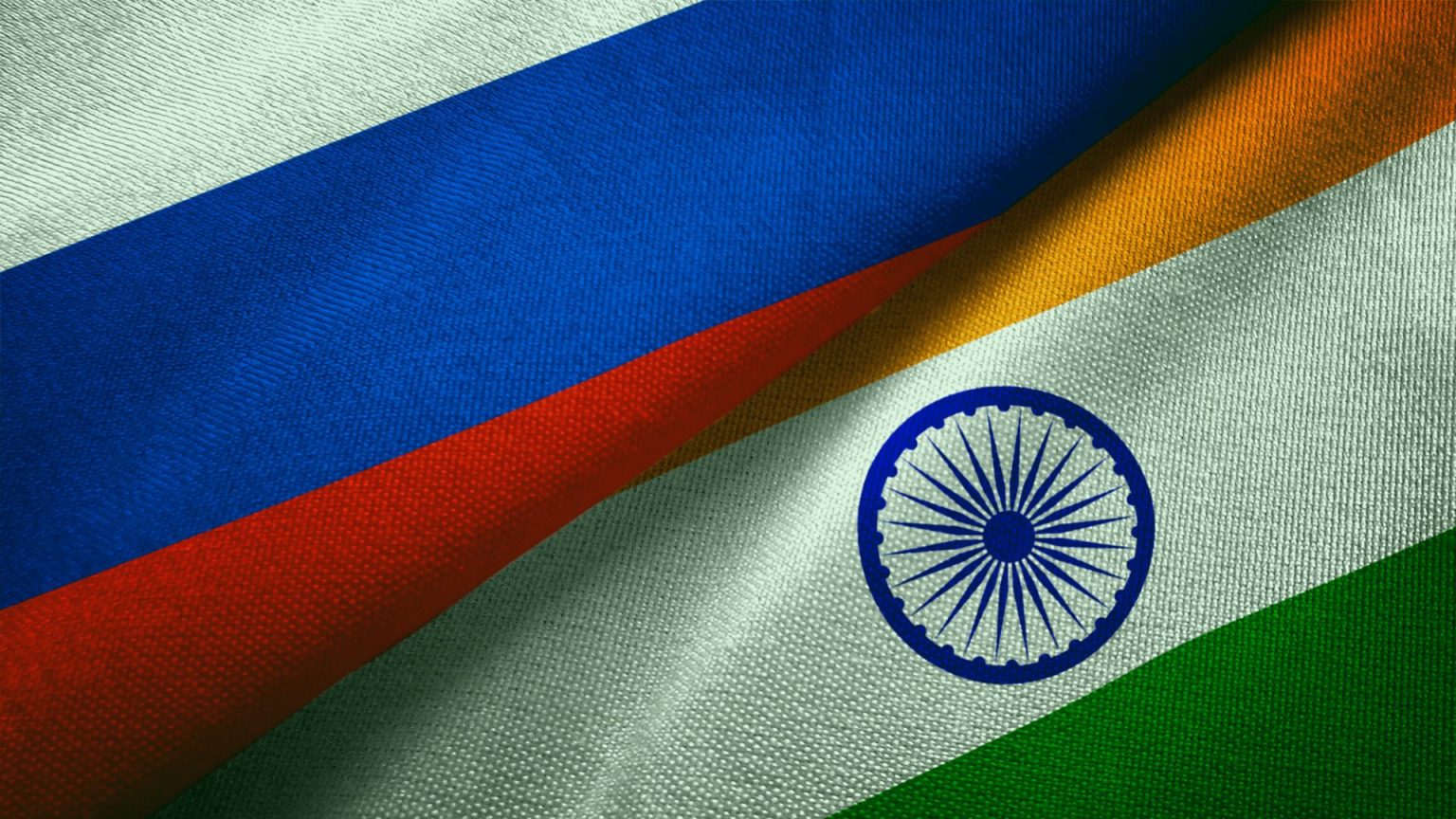
- 06 Oct 2025
In News:
- India and Russia marked 25 years of their Strategic Partnership in 2025, reaffirming their time-tested friendship and multifaceted cooperation amid a shifting global order.
- The partnership, first formalised in October 2000 through a declaration signed by President Vladimir Putin and Prime Minister Atal Bihari Vajpayee, was upgraded in 2010 to a “Special and Privileged Strategic Partnership.” This milestone underscores the enduring relevance of bilateral ties grounded in mutual trust, strategic autonomy, and converging global outlooks.
Evolution of the Partnership
- Over the last quarter-century, the India–Russia relationship has transitioned from a Cold War–era friendship to a broad-based strategic partnership encompassing defence, nuclear energy, science and technology, hydrocarbons, and space cooperation.
- Institutional mechanisms like the Intergovernmental Commission (IRIGC) and the 2+2 Dialogue framework have ensured sustained policy coordination across political, economic, and defence domains.
- At the 22nd Annual Summit held in Moscow in July 2024, both nations adopted joint statements on partnership and economic cooperation till 2030, alongside signing nine MoUs across critical sectors. Prime Minister Narendra Modi was also conferred Russia’s highest civilian honour, the Order of Saint Andrew, in recognition of his contribution to strengthening bilateral relations.
Multilateral and Global Engagement
- India and Russia continue to coordinate closely in multilateral platforms such as the United Nations (UN), G20, BRICS, and Shanghai Cooperation Organisation (SCO).
- During India’s G20 and SCO presidencies in 2023, the two nations held multiple high-level engagements, reaffirming commitment to a multipolar, rules-based international order.
- Russia has consistently supported India’s bid for a permanent seat in the UN Security Council, underscoring its trust in India’s global leadership role.
- Russia’s BRICS chairmanship in 2024 further strengthened this cooperation, with India actively participating in the Leaders’ Summit in Kazan, reflecting mutual alignment on global economic and security issues.
Economic and Trade Relations
- Economic engagement has become the new anchor of India–Russia relations. Bilateral trade reached a record USD 65.7 billion in FY 2023–24, driven by India’s rising imports of crude oil, fertilizers, and minerals, and exports of pharmaceuticals, machinery, and engineering goods.
- Both nations aim to elevate bilateral trade to USD 100 billion by 2030 and mutual investments to USD 50 billion by 2025.
- Negotiations for a Free Trade Agreement (FTA) between India and the Eurasian Economic Union (EAEU) are underway, expected to further liberalise trade flows and enhance connectivity through initiatives like the International North–South Transport Corridor (INSTC) and Arctic route cooperation.
- Emerging areas such as shipbuilding, railways, aircraft construction, and small modular nuclear reactors reflect the partnership’s adaptation to new technological and developmental priorities.
Defence and Security Cooperation
Defence remains the cornerstone of the India–Russia partnership. The collaboration has evolved from a buyer–seller relationship to joint production and technology co-development.
Key projects include:
- S-400 Triumf missile systems
- Su-30MKI and MiG-29 fighter jets
- T-90 tanks and AK-203 rifles
- INS Vikramaditya aircraft carrier
- BrahMos missile joint venture, a symbol of high-end defence collaboration
Joint military exercises such as INDRA and Vostok enhance interoperability and strategic trust. The cooperation under IRIGC–Military and Military Technical Cooperation (M&MTC) ensures continuous modernization of India’s armed forces with Russian collaboration.
Science, Technology, and Space Cooperation
- Science and technology have emerged as vital pillars of bilateral engagement. A 2021 roadmap guides collaboration in nanotechnology, quantum computing, artificial intelligence, and space exploration.
- The Kudankulam Nuclear Power Plant remains a flagship project, with plans for future units under discussion.
- New initiatives are fostering innovation and youth cooperation through institutions like the Sirius Educational Foundation and Atal Innovation Mission, encouraging joint research and startup linkages.
- Both sides are exploring joint lunar and spaceflight missions, expanding beyond traditional sectors to future-ready technologies.
People-to-People and Educational Exchanges
Beyond strategic sectors, cultural, educational, and academic exchanges have deepened mutual understanding. Student exchanges, scholarships, and Russian language learning in Indian institutions have strengthened grassroots connections. Tourism and labour mobility are emerging as new frontiers of bilateral engagement.
Outlook and Way Forward
Marking 25 years of partnership, India and Russia are renewing their cooperation to align with the demands of a multipolar and technology-driven world. The relationship is now expanding into innovation-led, climate-conscious, and connectivity-focused domains, while retaining its traditional strengths in defence and energy.
The upcoming 2025 bilateral summit in New Delhi—coinciding with the 15th anniversary of the “Special and Privileged” status—is expected to chart a roadmap for the next phase, prioritising:
- Concluding the India–EAEU Free Trade Agreement,
- Enhancing energy security and Arctic cooperation,
- Promoting defenceindigenisation, and
- Strengthening regional stability in Eurasia and the Indo-Pacific.
Global Forest Fund
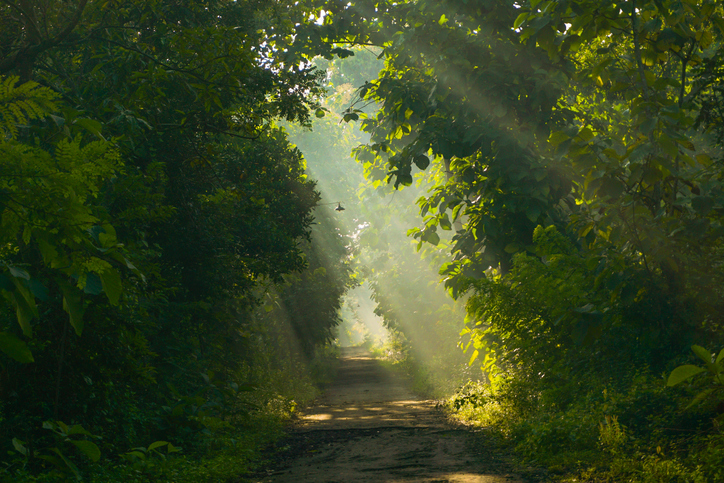
- 29 Sep 2025
In News:
- Brazil is set to become the first country to invest in the Tropical Forests Forever Facility (TFFF) — a multilateral fund designed to support long-term tropical forest conservation.
- The announcement is expected to be made at the United Nations headquarters in New York, marking a major step toward reshaping global climate finance ahead of COP30, which Brazil will host in Belém, Amazon region, in November.
About the Tropical Forests Forever Facility (TFFF)
- Origin: Proposed by Brazil during COP28 (UAE, 2023), the TFFF aims to create a permanent, self-sustaining financial mechanism to conserve tropical forests across the globe.
- Nature: It is a global, multilateral, and endowment-style fund—the first of its kind—dedicated exclusively to protecting tropical forests and ensuring steady, performance-based payments to countries maintaining their forest cover.
- Goal: To mobilize USD 125 billion through a blended finance structure, combining sovereign and private-sector contributions.
Financial Structure and Mechanism
- Funding Model:The fund will function as a permanent endowment, investing its corpus in diversified financial portfolios that generate sustainable returns.
- The returns will finance annual stipends to participating tropical forest countries (TFCs), based on the extent of their standing forests.
- Composition of Funds:
- Sponsors (20%) – High-income countries (as per World Bank classification) and global philanthropies.
- Market Investors (80%) – Institutional investors, sovereign wealth funds, and endowments participating via debt instruments (such as green bonds).
- Fund Management: Likely to be handled by a Multilateral Development Bank (MDB) such as the World Bank, ensuring transparency and credibility.
- Initial Target:To reach the full USD 125 billion goal, Brazil plans to secure an initial USD 25 billion from governments and philanthropies, which would serve as an anchor to attract an additional USD 100 billion from private investors.
Brazil’s Role and Strategic Intent
- Brazil’s upcoming investment will make it the first contributor to the fund — signaling its confidence in the mechanism and encouraging other nations to follow suit.
- According to official sources, the investment amount will be “considerable,” intended to set a benchmark and demonstrate Brazil’s commitment to global forest conservation.
- As home to the world’s largest tropical rainforest, Brazil stands to receive significant future payouts under the TFFF, reinforcing its dual role as a beneficiary and a leader in climate stewardship.
Global Participation and Support
- Several countries have already expressed interest in joining the initiative, including China, the United Kingdom, France, Germany, Norway, Singapore, and the United Arab Emirates.
- Notably, China has conveyed its intention to contribute among the first investors — a move seen as a potential turning point in global climate finance, traditionally dominated by Western donors.
Significance
- Bridging Climate Finance Gaps:The TFFF introduces a results-based, long-term funding model for forest conservation, shifting away from short-term grants toward permanent, scalable financing.
- Shared Global Responsibility:The participation of both developed and developing nations underscores a more equitable climate finance architecture, aligning with the principle of common but differentiated responsibilities (CBDR).
- Boost to COP30 and Viksit Bharat 2047 Goals:Brazil’s leadership strengthens its position ahead of COP30 and aligns with India’s own emphasis on sustainable development and green finance under Mission LiFE and Viksit Bharat 2047 frameworks.
- Preserving Global Carbon Sinks:By rewarding countries for maintaining forests, the fund provides a direct economic incentive for protecting vital ecosystems that regulate global climate patterns.
India’s first overseas defence manufacturing facility
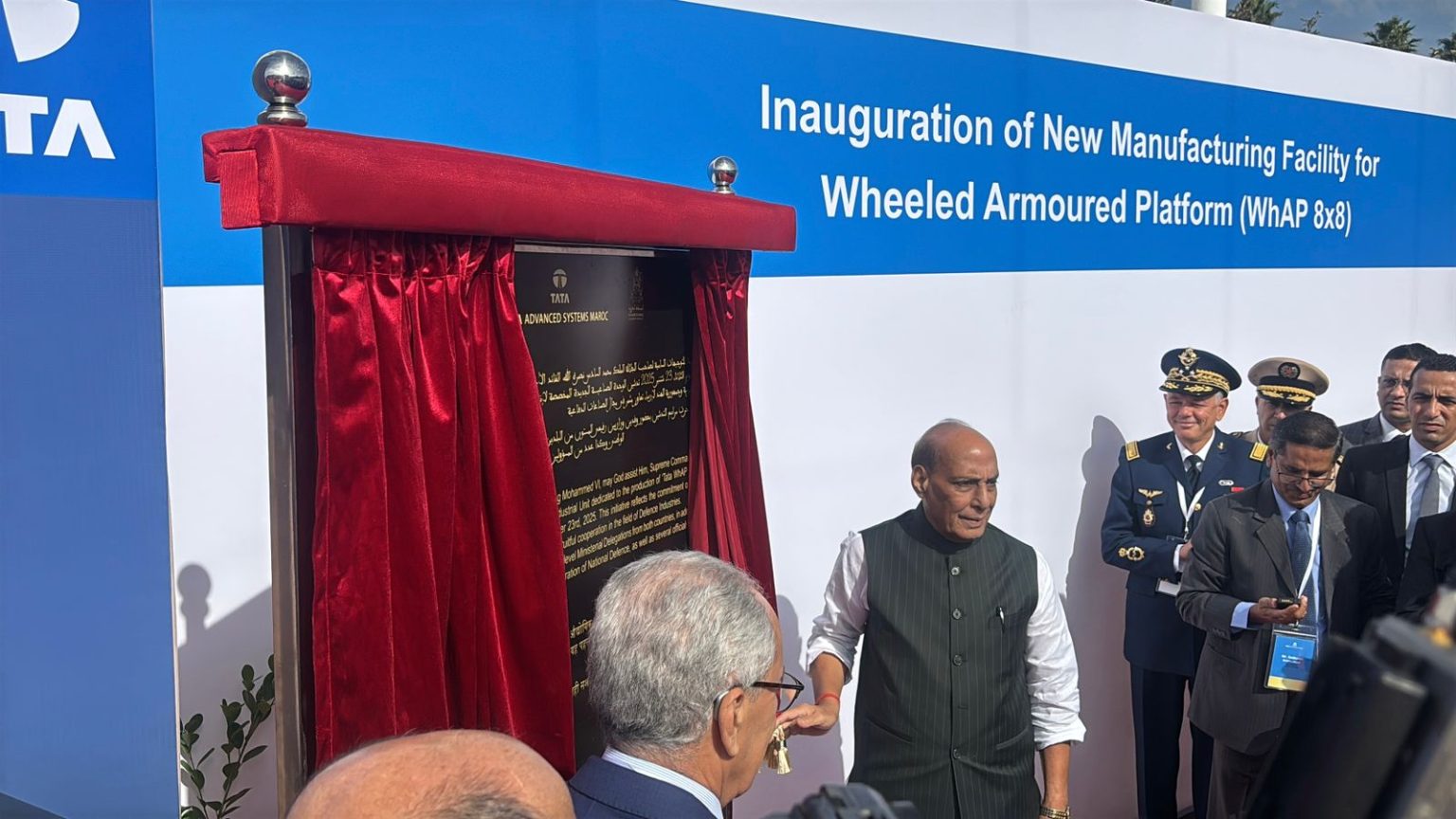
- 29 Sep 2025
In News
- In a major step towards expanding India’s defence industrial footprint globally, Defence Minister Rajnath Singh and his Moroccan counterpart AbdelatifLoudyi jointly inaugurated India’s first overseas defence manufacturing facilityatBerrechid, Morocco.
- Set up by Tata Advanced Systems Limited (TASL) in collaboration with the Defence Research and Development Organisation (DRDO), the facility marks a historic milestone in India’s defence diplomacy and the growing strategic partnership between India and Morocco.
About the Facility
- Location:Berrechid, Morocco
- Established by: Tata Advanced Systems Limited (TASL) in partnership with DRDO
- Launched in: 2025
- Scale: Spread over 20,000 sq. metres, it is Morocco’s largest defence manufacturing facility and India’s first such overseas plant by a private defence company in Africa.
- Primary Production: The Wheeled Armoured Platform (WhAP) — an indigenously developed 8×8 modular combat vehicle jointly designed by TASL and DRDO.
Key Features
- Product Range: The WhAP will be produced in multiple configurations including:
- Infantry Fighting Vehicle
- Armoured Personnel Carrier
- Reconnaissance Vehicle
- Command Post
- Mortar Carrier
- Armoured Ambulance
- Technical Capabilities:
- Equipped with advanced mobility, armour protection, remote weapon stations, and anti-tank guided missile systems.
- Incorporates indigenous technologies and customised modular design for varied combat roles.
- Local Sourcing:
- Initially, one-third of components will be sourced locally from Morocco.
- This is expected to increase to 50% in later phases, fostering industrial collaboration and technology transfer.
Strategic Objectives
The facility aims to advance India’s Aatmanirbhar Bharat vision beyond domestic production to global partnerships under the theme “Make with Friends, Make for the World.”
Key Goals:
- Strengthen India–Morocco defence cooperation and bilateral industrial partnerships.
- Promote defence exports and technology sharing with friendly nations.
- Support regional security and stability across Africa and Europe through capacity-building.
Significance
1. Strategic and Diplomatic
- Establishes Morocco as a strategic hub for Indian defence manufacturing in North Africa and Europe.
- Deepens India’s defence diplomacy and enhances its global footprint in high-technology sectors.
- Reinforces India’s credibility as a trusted partner in defence collaboration.
2. Economic and Industrial
- Generates direct and indirect employment in Morocco.
- Develops a local supplier ecosystem and supports critical technology capabilities within the host nation.
- Boosts India’s defence exports while contributing to Morocco’s industrial development.
3. Technological and Strategic Autonomy
- Demonstrates India’s growing capability to design, produce, and export advanced defence systems.
- Showcases India’s transition from import dependence to a global exporter of high-end military technologies.
Evo AI Model
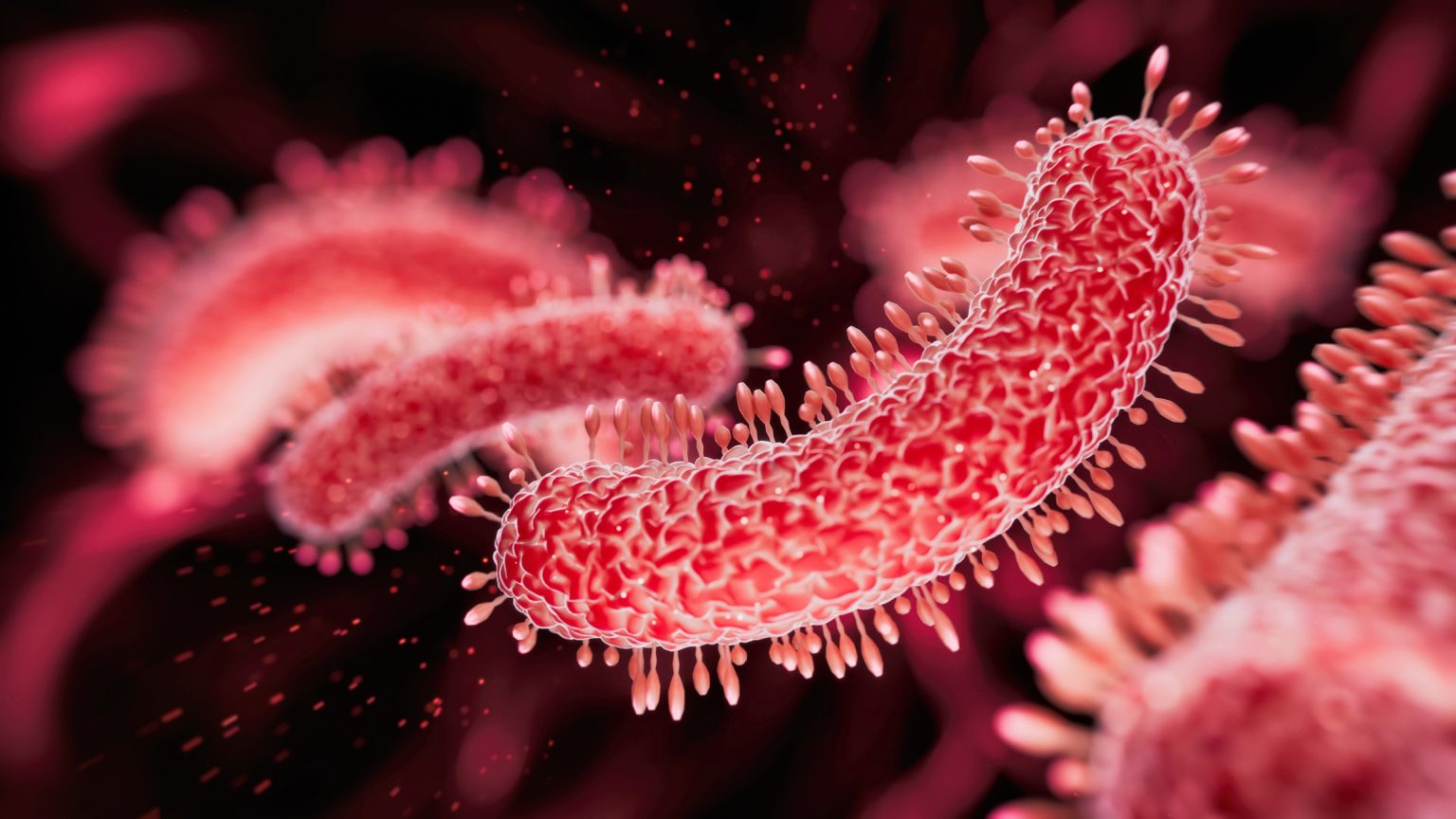
- 25 Sep 2025
In News:
- In a groundbreaking scientific development, researchers at Stanford University, in collaboration with the Arc Institute, have used artificial intelligence (AI) to design viruses capable of killing harmful bacteria.
- This breakthrough offers a potential solution to the global antibiotic resistance crisis and marks a significant advance in AI-guided synthetic biology.
The Challenge of Antibiotic Resistance
- Antimicrobial resistance (AMR) is a growing global health threat. According to the World Health Organization (WHO), AMR is among the top public health and development challenges, contributing to an estimated 1.27 million deaths globally in 2019 and playing a role in 4.95 million deaths.
- In India alone, around 6 lakh lives are lost annually due to drug-resistant infections. Traditional antibiotics are increasingly ineffective, necessitating novel approaches to combat bacterial diseases.
- Bacteriophages, or viruses that specifically target bacteria, provide a promising alternative. Unlike antibiotics, phages attack specific bacterial strains, sparing beneficial microbes. However, engineering or identifying effective phages has historically been slow and labor-intensive.
AI Breakthrough: The Evo Model
To accelerate this process, scientists developed Evo, a large AI model for genomics, described as a “ChatGPT for DNA”. Evo was trained on 80,000 microbial genomes and millions of bacteriophage and plasmid sequences, encompassingapproximately 300 billion nucleotides.
Key Features of Evo:
- Foundation Model for Genomics: Predicts, designs, and generates genetic code for synthetic biology applications.
- Generative Capability: Creates novel viral blueprints, synthetic genomes, and protein variants (e.g., Cas9 variants).
- Extended Context Length: Understands long DNA sequences and gene interactions.
- High Precision: Operates at nucleotide-level resolution.
- Accelerated R&D: Reduces decades of trial-and-error lab work to weeks.
- Open Research: Publicly available for non-commercial academic use.
How the AI-Designed Viruses Were Created
- Selection of Model Virus: Scientists chose phiX174, a simple virus infecting E. coli, due to its well-characterized genome (11 genes) and manageable complexity.
- AI Training: Evo analyzed millions of viral sequences, learning gene structures and functional combinations that could enhance antibacterial activity.
- Generative Design: The AI proposed hundreds of new virus variants predicted to attack bacteria effectively.
- Laboratory Synthesis: Researchers synthesized the AI-designed genomes and tested them in the lab. 16 new viruses successfully infected and destroyed bacteria, with some performing better than natural counterparts.
Significance of the Discovery
- Rapid Innovation: AI accelerates phage design, shrinking decades of research into weeks.
- Targeted Therapy: Offers precision treatments against drug-resistant bacterial infections.
- Agricultural and Clinical Applications: Potential to safeguard human health, hospitals, and food production from bacterial threats.
- Scientific Implications: Raises philosophical and biological questions about AI’s ability to create life-like entities, as viruses, while not strictly “alive,” mimic key life processes.
Safety and Ethical Considerations
Experts caution that AI-designed viruses, if misused or released unintentionally, could pose biosecurity risks. While engineering harmful human viruses is highly complex, the possibility of accidental creation of dangerous pathogens calls for strict safety protocols, oversight, and ethical guidelines. Responsible research is essential to ensure societal benefit while minimizing risk.
India–Singapore Comprehensive Strategic Partnership (CSP): 2025 Roadmap
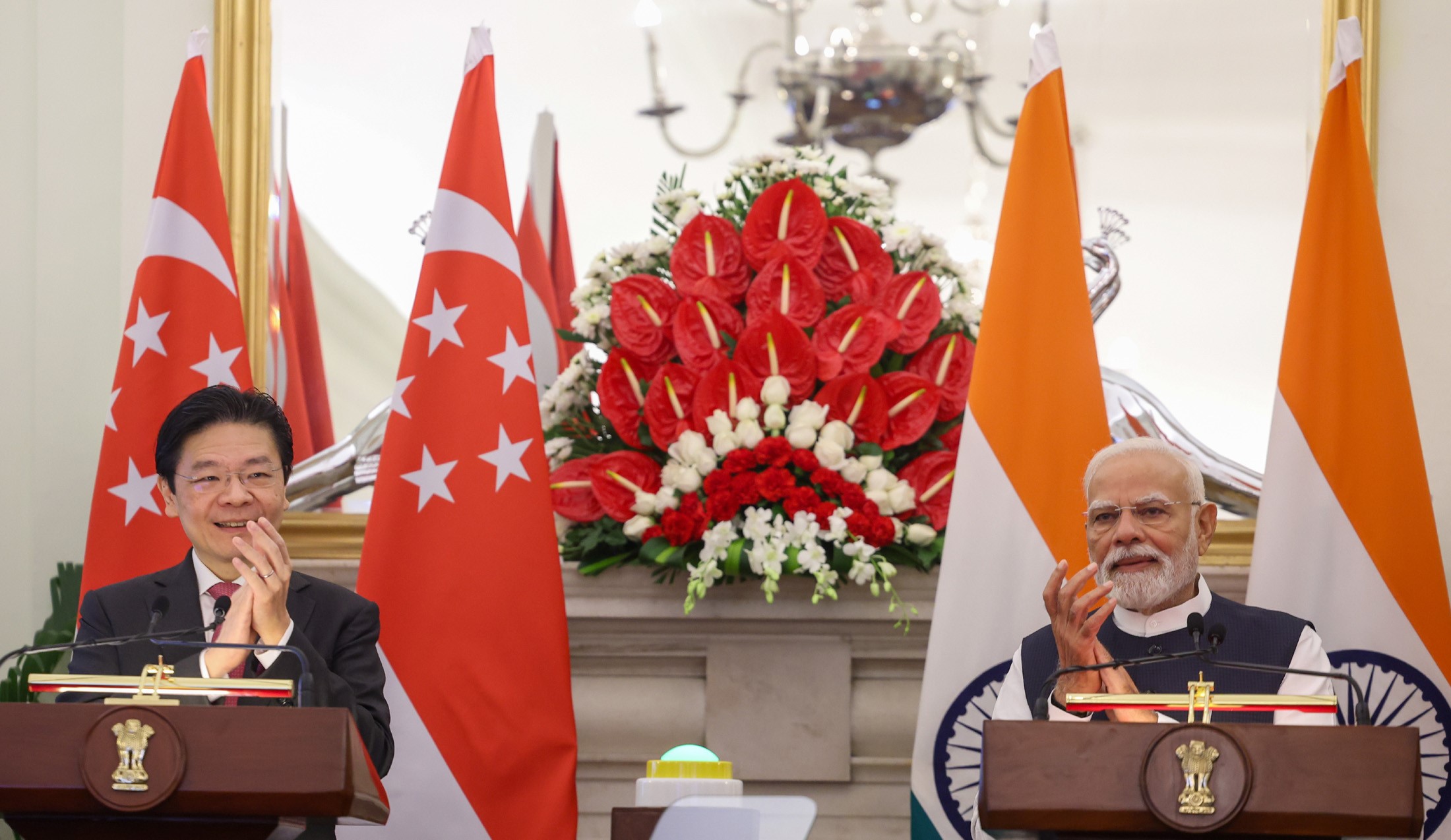
- 10 Sep 2025
In News:
The visit of Singapore Prime Minister Lawrence Wong to India in September 2025 marked 60 years of diplomatic relations and culminated in the adoption of a forward-looking Comprehensive Strategic Partnership (CSP) Roadmap. This elevates bilateral ties beyond trade to encompass technology, security, sustainability, and people-centric cooperation, reinforcing Singapore’s role as a vital partner in India’s Act East Policy and Indo-Pacific vision.
What is CSP?
- The Comprehensive Strategic Partnership (CSP) is the highest level of bilateral engagement between India and Singapore.
- It was elevated from a Strategic Partnership in 2015, and deepened further in 2025 through the adoption of a roadmap across eight key sectors.
Eight-Pillar Cooperation Framework
- Economic Cooperation
- Review of Comprehensive Economic Cooperation Agreement (CECA) and ASEAN-India Trade in Goods Agreement (AITIGA) in 2025.
- Partnership in semiconductors: Singapore produces 10% of global semiconductors and 20% of semiconductor equipment—key to India’s domestic chip manufacturing ambitions.
- Cooperation in industrial parks, sustainable manufacturing, capital market connectivity (NSE-IFSC-SGX GIFT Connect), and space collaboration.
- Skills Development
- Establishment of the National Centre of Excellence for Advanced Manufacturing in Chennai.
- Joint efforts in Technical and Vocational Education and Training (TVET), skill certification, train-the-trainers programmes, and nursing skill cooperation (expansion of the Singapore–Assam model).
- Digitalisation
- Expansion of UPI–PayNow linkage for seamless cross-border payments.
- Collaboration in fintech, cybersecurity, AI applications (healthcare, agriculture), start-up ecosystems, and adoption of TradeTrust for e-Bills of Lading in trade documentation.
- Sustainability & Green Growth
- Cooperation in green hydrogen, ammonia, and civil nuclear energy.
- Joint climate initiatives under Article 6.2 of the Paris Agreement.
- Collaboration in the International Solar Alliance (ISA) and Global Biofuels Alliance.
- Partnership in food security, agricultural exports, and water management.
- Connectivity
- Establishment of an India–Singapore Green and Digital Shipping Corridor linking major Indian ports with Singapore.
- Knowledge-sharing in aviation (air services agreement, sustainable aviation fuel, MRO collaboration).
- Healthcare & Medicine
- MoU on Health and Medicine: digital health, maternal and child health, disease surveillance, and medical R&D.
- Nursing cooperation and skills training to enhance employability in Singapore.
- People-to-People & Cultural Exchanges
- Student and professional exchanges, parliamentary engagement, think tank linkages, and public service training.
- Promotion of cultural heritage and maritime history collaborations.
- Defence& Security
- Enhanced military cooperation through SIMBEX 2025 and other tri-service exercises.
- Collaboration on defence technology (AI, automation, unmanned systems, quantum computing).
- Maritime security including submarine rescue cooperation and regional patrols.
- Strengthened counter-terrorism efforts via FATF and other multilateral mechanisms.
- Singapore acknowledged India’s interest in the Malacca Straits Patrol (MSP); India’s Andaman & Nicobar Command enhances regional maritime domain awareness.
Strategic Significance
- Positions Singapore as India’s gateway to Southeast Asia and the broader Indo-Pacific.
- Enhances regional security architecture aligned with ASEAN principles.
- Demonstrates how middle powers can address global uncertainties through technology partnerships, defence collaboration, and sustainable growth initiatives.
e-Jagriti Platform

- 26 Aug 2025
In News:
In a significant boost to India’s consumer protection framework, ten States along with the National Consumer Disputes Redressal Commission (NCDRC) achieved a disposal rate of over 100% in July 2025. This indicates that the number of consumer cases resolved exceeded the number of new cases filed, showcasing efficiency in grievance redressal.
Key Disposal Achievements
- NCDRC: 122%
- Tamil Nadu: 277%
- Rajasthan: 214%
- Telangana: 158%
- Himachal Pradesh & Uttarakhand: 150% each
- Meghalaya: 140%
- Kerala: 122%
- Puducherry: 111%
- Chhattisgarh: 108%
- Uttar Pradesh: 101%
This trend highlights faster case resolution and effective functioning of consumer commissions across India.
The e-Jagriti Platform
The success is largely aided by e-Jagriti, a flagship digital initiative of the Department of Consumer Affairs, designed to strengthen the consumer dispute redressal system.
Objectives
- Computerization and networking of all Consumer Commissions (National, State & District).
- Enhancing transparency, efficiency, and speed in dispute resolution.
- Providing accessible, cost-effective, and paperless grievance redressal.
Features
- E-filing of complaints with online fee payment.
- Real-time case tracking and access to judgments.
- AI-powered Smart Search for archived complaints/judgments.
- Voice-to-text conversion of judgments and case details using AI/ML.
- Integration of multiple platforms:
- Online Case Monitoring System (OCMS)
- E-Daakhil
- NCDRC Case Monitoring System
- CONFONET website
- Mediation application
Since its launch, over 2 lakh users (including NRIs) have registered on e-Jagriti, with 85,531 cases filed online in 2025 alone, demonstrating growing public trust.
Significance
- Strengthens consumer rights and access to justice.
- Reduces backlog and delays through tech-driven case management.
- Promotes digital governance and transparency in consumer protection.
- Aligns with citizen-centric reforms and Digital India Mission.
UdyamSakhi Portal
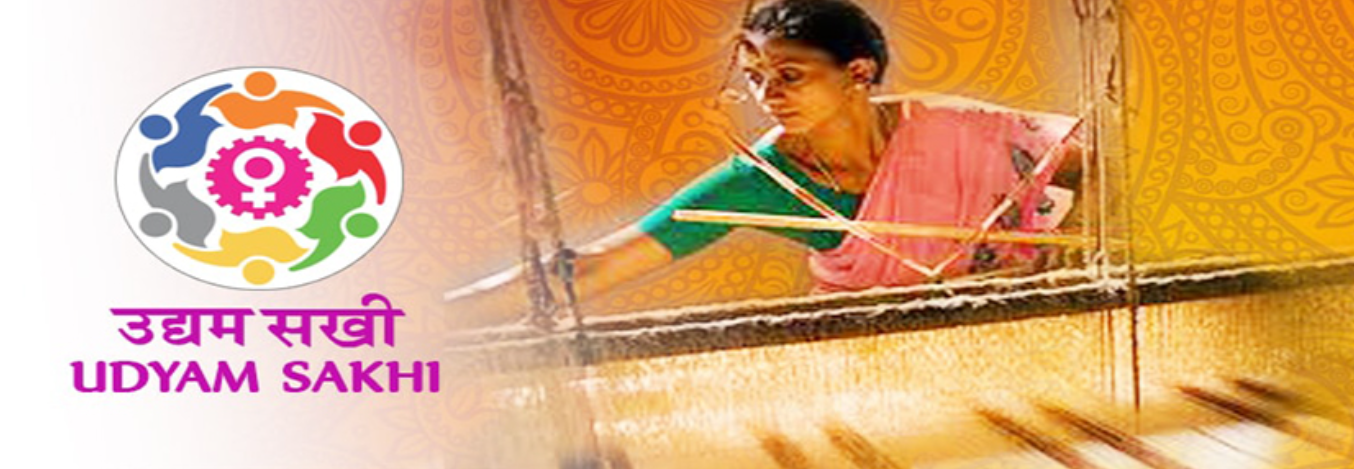
- 25 Aug 2025
In News:
The UdyamSakhi Portal, launched by the Ministry of Micro, Small and Medium Enterprises (MSME) in March 2018, is helping women entrepreneurs across India start, build, and expand their businesses, fostering self-reliance and economic empowerment.
Objectives and Significance
The portal serves as a one-stop resource for existing and prospective women entrepreneurs, providing information on:
- Financial schemes such as the Prime Minister’s Employment Generation Programme (PMEGP), Credit Guarantee Fund Trust for Micro and Small Enterprises (CGTMSE), MUDRA, and Trade Receivables e-Discounting System (TReDS).
- Policies, programs, and business plan preparation.
- Nodal offices and supporting organizations of the MSME Ministry across states.
It also updates users on exhibitions, trade fairs, and international events, creating opportunities to connect with markets and expand business reach.
Programmatic Functions
UdyamSakhi provides a comprehensive suite of services, including:
- Entrepreneurship learning tools and guidance for business model creation
- Incubation facilities for nurturing startups
- Training programs for fundraising
- Mentorship support and one-on-one investor interactions
- Market survey support
- Learning and development through education, information, technical assistance, and training
The portal acts as a network for nurturing entrepreneurship, especially for low-cost products and services, enabling women to become self-reliant and self-sufficient.
Outreach and Impact
Since its inception, the portal has seen 4,535 women register, demonstrating its growing impact on women-led entrepreneurship in the MSME sector. Developed with an expenditure of ?43.52 lakh, the portal continues to expand access to resources, guidance, and opportunities for women entrepreneurs nationwide.
Golden Dome Missile Defense Shield
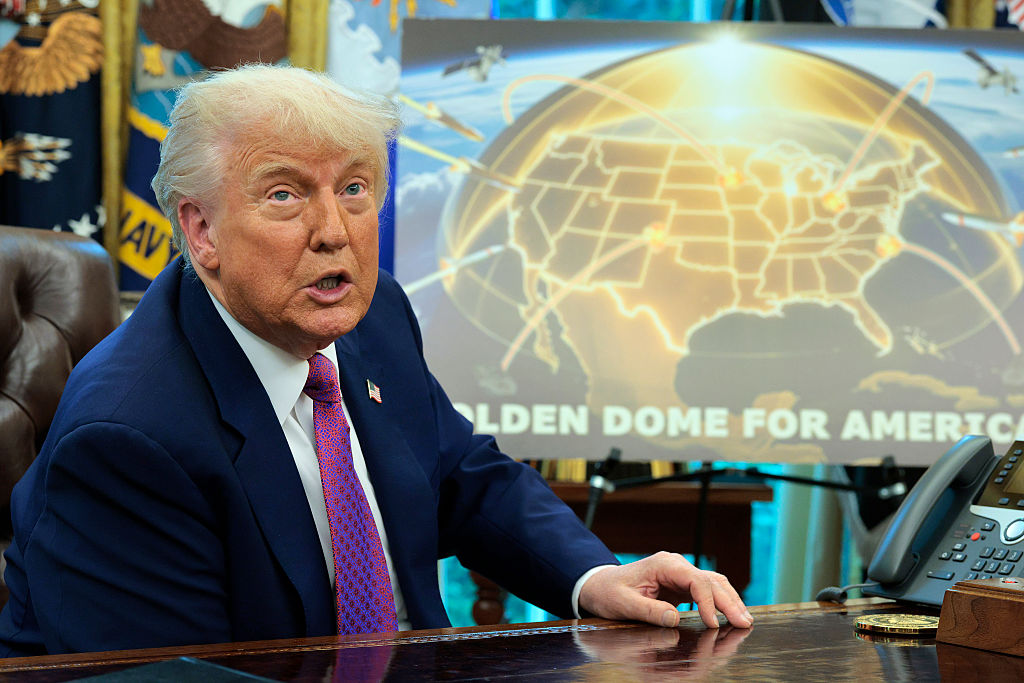
- 23 Aug 2025
In News:
The Golden Dome is a proposed ground- and space-based missile defense system of the United States, announced in 2025 with a projected outlay of $175 billion. It is designed to provide multi-layered protection against intercontinental ballistic missiles (ICBMs), hypersonic weapons, and cruise missiles from adversaries such as China, Russia, Iran, and North Korea.
Objectives
- Establish a comprehensive shield capable of intercepting hostile missiles in their boost, midcourse, and terminal phases.
- Enhance U.S. homeland security through satellite-based early warning, tracking, and interception.
- Integrate existing U.S. missile defense systems into a unified architecture.
Key Features
- Space-Based Layer
- Hundreds of satellites equipped with sensors and interceptors to detect and neutralize missiles soon after launch.
- Incorporation of laser-based systems for mid-flight interception.
- Ground-Based Layers
- Layer 2: Strengthening of the existing Ground-Based Midcourse Defense (GMD) in California and Alaska.
- Layer 3: Five new land-based launch sites (three in continental U.S., two in Hawaii and Alaska) to intercept missiles during their space trajectory.
- Layer 4: “Limited Area Defense” to protect key population centers, using radars, common launchers, and systems like Patriot, THAAD, and Aegis BMD.
- Integration with Existing Systems
- Builds upon existing U.S. missile defense infrastructure to ensure layered and redundant protection.
Comparison with Other Systems
- Israel’s Iron Dome: Golden Dome is often compared to Iron Dome, though the latter is designed for short-range rockets (4–70 km), while Golden Dome targets long-range ballistic and hypersonic threats.
- Reagan’s Strategic Defense Initiative (SDI/“Star Wars”): Golden Dome revives the 1980s concept of space-based defenses, but with advanced modern technology in satellites, sensors, and lasers.
Challenges
- Funding uncertainties: Though an initial $25 billion allocation has been proposed, political hurdles remain.
- Technological feasibility: Space-based interceptors and lasers pose significant challenges in cost, testing, and deployment.
- Strategic implications: Critics argue the system could revive debates on arms races and anti-ballistic missile treaties.
Significance
If realized, the Golden Dome would represent the most ambitious U.S. missile defense program since the Cold War, potentially altering global strategic stability by providing the U.S. with a multi-domain shield against next-generation missile threats.
Wallacean Hominids
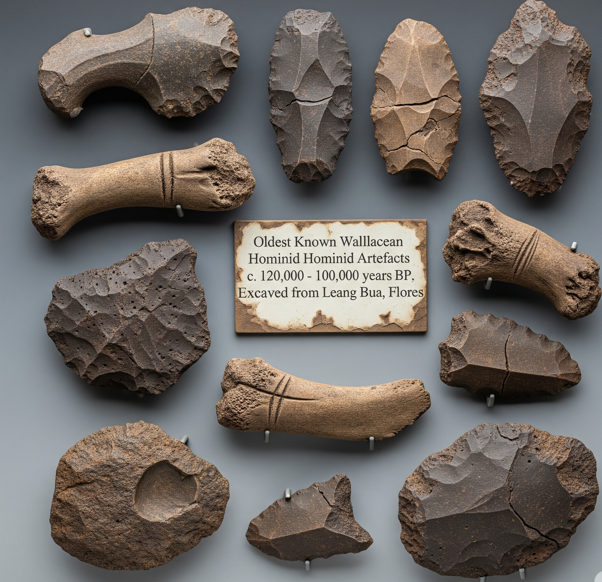
- 18 Aug 2025
In News:
Recent archaeological findings on Sulawesi Island, Indonesia, have revealed stone tools dating back to nearly 1.5 million years ago, marking the earliest known evidence of human presence in the Wallacea region.
Key Findings:
- Archaeologists from Australia and Indonesia discovered small, chipped stone tools in the Soppeng region of South Sulawesi.
- The artefacts, likely used to cut small animals and carve rocks, were found along with animal teeth.
- Radioactive dating suggests the tools are up to 1.48 million years old.
- These findings were published in Nature (August 2025).
Significance:
- The artefacts are attributed to Homo erectus, pre-historic hominids that lived long before the emergence of Homo sapiens.
- Previously, Homo erectus in Wallacea were thought to have occupied only Flores (Indonesia) and Luzon (Philippines) around 1.02 million years ago.
- The Sulawesi discovery pushes back the timeline by almost half a million years, challenging earlier assumptions that Homo erectus lacked the capacity for long-distance sea crossings.
- It provides crucial evidence of early maritime dispersal and migration patterns of ancient humans from the Asian mainland into island ecosystems.
About Wallacea:
- Wallacea is a biogeographic region in Eastern Indonesia, comprising islands such as Sulawesi, Lombok, Flores, Timor, and Sumbawa, situated between Borneo–Java and Australia–New Guinea.
- The region is named after Alfred Russel Wallace, the naturalist who studied its distinct biodiversity.
- It acts as a natural transitional zone between the fauna of Asia and Australia.
Jal Jeevan Mission (JJM)
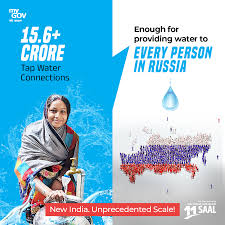
- 13 Aug 2025
In News:
The Jal Jeevan Mission (JJM), launched in August 2019, aims to provide Functional Household Tap Connections (FHTCs) to every rural household, ensuring safe, adequate, and regular potable water supply. At the time of its launch, only 17% of rural households (3.23 crore) had tap water access. As of 14 August 2025, this has increased to 81% coverage (15.68 crore households) out of a total 19.36 crore rural households, with over 12.45 crore additional connections provided.
Institutional Framework
- State Subject: Drinking water supply is primarily the responsibility of States/UTs, while the Centre provides technical and financial support.
- Funding: An initial outlay of ?2,08,652 crore was approved; the scheme has now been extended until 2028 with enhanced allocation for completing pending works and strengthening Operation & Maintenance (O&M).
- Citizen Participation: The 2025 Budget emphasized “Jan Bhagidari” for sustainable and community-centric water service delivery.
Quality Standards and Monitoring
- Benchmark: Water quality is mandated to comply with BIS:10500 standards, which specify acceptable and permissible limits for chemical, physical, and bacteriological parameters.
- Testing: In December 2024, the government released a Concise Handbook for States/UTs, recommending comprehensive testing at multiple points—source, treatment plant, storage, and distribution.
- Remedial Actions: Include regular cleaning of overhead tanks and corrective measures in case of contamination.
- Transparency Tools:
- JJM Dashboard “Citizen Corner” displays village-level water test results.
- Complaints can be filed via CPGRAMS (pgportal.gov.in) and the Department’s website (jalshakti-ddws.gov.in).
- Aadhaar-linked monitoring, geo-tagging, IoT sensors, and third-party inspections are employed for real-time tracking.
Significance
- Public Health: Ensures safe drinking water, reducing the burden of waterborne diseases.
- Gender Empowerment: Frees women and girls from time-consuming water collection, enabling better education and livelihoods.
- Rural Development: Improves quality of life, reduces drudgery, and enhances rural productivity.
- Sustainability: Integrates with groundwater management initiatives like the Atal Bhujal Yojana, promoting long-term water security.
Current Status (2025)
- Coverage: 81% rural households have tap water supply.
- Target: Universal coverage by 2028 with a focus on infrastructure quality, O&M, and sustainable, citizen-driven service delivery.
Supreme Court orders immediate removal of stray dogs from Delhi-NCR streets
- 13 Aug 2025
In News:
The Supreme Court of India has directed the immediate removal of all free-ranging dogs from Delhi, Noida, Gurugram, and Ghaziabad. The Court emphasized permanent relocation of these animals to shelters, citing rising incidents of rabies and dog bites, particularly affecting children and vulnerable groups.
Key Features of the Order
- Complete Removal: All stray dogs are to be captured to ensure “stray-free” streets in urban and peri-urban areas.
- No-Release Policy: Unlike the earlier Animal Birth Control (ABC) approach, captured dogs will not be returned to their original localities but retained in shelters.
- Shelter Infrastructure: Authorities must build facilities capable of housing at least 5,000 dogs within eight weeks, prioritizing high-risk localities.
- Emergency Response: A 24×7 helpline with a four-hour response time is mandated to tackle bite incidents.
- Strict Compliance: Interference with the process will attract contempt of court, ensuring accountability.
Rationale Behind the Order
- Public Health Priority: With nearly 5,700 rabies-related deaths annually (95% from dog bites), the order seeks to directly curb a preventable disease.
- Protection of Vulnerable Groups: Children and the elderly face higher risks due to limited self-defence capacity.
- Policy Ineffectiveness: The sterilisation-centric ABC model has not adequately addressed aggressive or rabies-carrying dogs.
- Constitutional Angle: By invoking Article 21 (Right to Life and Liberty), the Court underlined safe mobility and freedom from fear in public spaces.
- Permanent Reform: A structural shift from temporary containment to long-term removal from public areas.
Arguments in Favour
- Public Safety: A direct life-saving intervention against rabies deaths.
- Constitutional Backing: Strengthens the right to security under Article 21.
- Urban Governance: Integrates sanitation and safety into city management.
- Accountability: Surveillance and records ensure transparency in enforcement.
- Policy Gaps Addressed: Closes loopholes of the ABC model by ending return-to-locality practices.
Concerns and Counter-Arguments
- Legal Conflict: The directive may clash with existing ABC Rules framed under the Prevention of Cruelty to Animals Act.
- Animal Welfare: Overcrowded shelters risk inhumane conditions, raising ethical concerns.
- Ecological Impact: Sudden removal could disrupt rodent control and waste management functions performed by strays.
- Risk of Abuse: Lack of monitoring might lead to covert culling under the guise of relocation.
- Rights-Based Critique: May be seen as undermining the intrinsic rights of animals and compassion-based governance.
Way Forward
- Humane Shelter Models: Ensure adequate space, veterinary care, and nutrition.
- Mass Vaccination Drives: Combine removal with preventive health measures to eradicate rabies.
- Adoption and Community Participation: Promote responsible adoption under strict guidelines.
- Policy Harmonisation: Amend ABC Rules to align with SC directions and resolve legal inconsistencies.
- Awareness and Behavioural Change: Community-level campaigns on rabies prevention and civic responsibility.
Conclusion
The Supreme Court’s intervention highlights the tension between public health imperatives and animal welfare ethics. While it seeks to secure citizens’ right to safe public spaces, it also raises concerns of legality, humane treatment, and ecological balance. Going forward, the challenge lies in striking a balance between constitutional morality (right to life) and compassion ethics (animal welfare) through coherent policy design and ethical urban governance.
World Air Transport Statistics (WATS) 2024
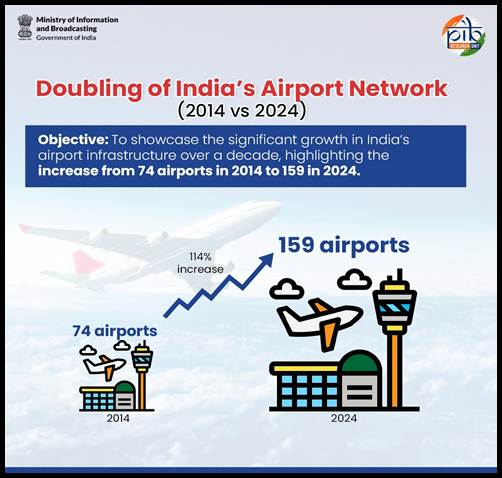
- 08 Aug 2025
In News:
According to the World Air Transport Statistics (WATS) 2024, released by the International Air Transport Association (IATA), India has emerged as the world’s 5th-largest aviation market, handling 211 million passengers in 2024.
Key Findings of WATS 2024
- India: 211 million passengers in 2024, growing 11.1% over 2023.
- Ahead of: Japan (205 million, 18.6% growth).
- Global Rankings:
- United States – 876 million passengers (+5.2%).
- China – 741 million passengers (+18.7%).
- United Kingdom – 261 million passengers.
- Spain – 241 million passengers.
- India – 211 million passengers.
- Busiest Routes (Airport Pairs):
- Global:Jeju–Seoul (South Korea) – 13.2 million passengers.
- India: Mumbai–Delhi – 5.9 million passengers, ranked 7th globally.
- Trend: Asia-Pacific dominated busiest airport-pair rankings.
India’s Aviation Transformation
1. Legislative Reforms
- Protection of Interests in Aircraft Objects Bill, 2025: Aligns leasing system with the Cape Town Convention, lowering leasing costs and boosting investor confidence.
- BharatiyaVayuyanAdhiniyam, 2024: Replaces colonial-era Aircraft Act, 1934; promotes Make in India, simplifies licensing, and aligns with ICAO norms.
2. Infrastructure Expansion
- New Terminals: Foundation laid at Varanasi, Agra, Darbhanga, Bagdogra.
- Greenfield Airports: 12 operationalised since 2014 (e.g., Shirdi, Mopa, Shivamogga); Navi Mumbai and Noida (Jewar) to be operational by 2025–26.
- Investment: ?91,000 crore allocated under National Infrastructure Pipeline (NIP); ?82,600 crore already spent by Nov 2024.
3. Government Initiatives
- UDAN Scheme: Expands regional air connectivity, affordable travel.
- National Civil Aviation Policy (NCAP): Boosts MRO (Maintenance, Repair, Overhaul), airport development, and leasing ecosystem.
- Green Airports Policy: Promotes renewable energy, waste reduction, and carbon neutrality.
- Aircraft Leasing Hub:GIFT City being developed as a global hub for aircraft leasing and financing.
Significance
- India consolidates its position as a major aviation hub, driven by rising passenger traffic, policy reforms, and infrastructure expansion.
- Reflects growing regional connectivity under UDAN and global competitiveness with regulatory modernisation.
- Places India in the top five global aviation markets for the first time.
Global Artificial Intelligence (AI) City Index 2025

- 08 Aug 2025
In News:
Bengaluru ranks 26thin Global AI City Index, Singapore secures top spot.
About the Index
- Published by: Market research firm Counterpoint Research.
- Objective: Benchmarks global cities on their AI capacity, investment, and innovation.
- Evaluation Criteria:
- AI R&D ecosystem and startup strength
- Investment inflows & public–private partnerships
- AI applications in transport, healthcare, and education
- Data centre growth & digital infrastructure readiness
- Governance and regulatory frameworks
Global Rankings (2025)
- Top 5 Cities: Singapore (1st), Seoul (2nd), Beijing (3rd), Dubai (4th), San Francisco (5th).
- Key Trends:
- Singapore’s success driven by strong startup ecosystem and public–private collaboration in healthcare, telecom, and transport.
- Seoul excels in AI healthcare and education applications.
- Beijing introduced formal AI education for all primary & secondary school students (2025).
- Investments in supercomputing expected to reduce gap between North America and China.
- Tech industry leaders: Microsoft (most active vendor with AI data centres, training, innovation hubs), followed by Google and Amazon expanding their global AI footprint.
India’s Performance
- Bengaluru: Ranked 26th globally – India’s top AI R&D and data centre hub with a vibrant startup ecosystem attracting foreign investment.
- Other Indian Cities:
- Mumbai & Delhi – Leveraging AI for traffic management and public security.
- Chennai & Kolkata – Emerging AI hubs.
- India’s Challenge: Report highlights need for a comprehensive AI roadmap and robust regulatory framework to maximize growth potential.
Significance
- Establishes Bengaluru as India’s AI capital, strengthening its role in digital infrastructure and innovation.
- Reflects India’s growing presence in the global AI landscape while underlining policy gaps.
- Offers lessons from global leaders like Singapore and Seoul on AI integration in governance, education, and healthcare.
Apna Ghar Initiative
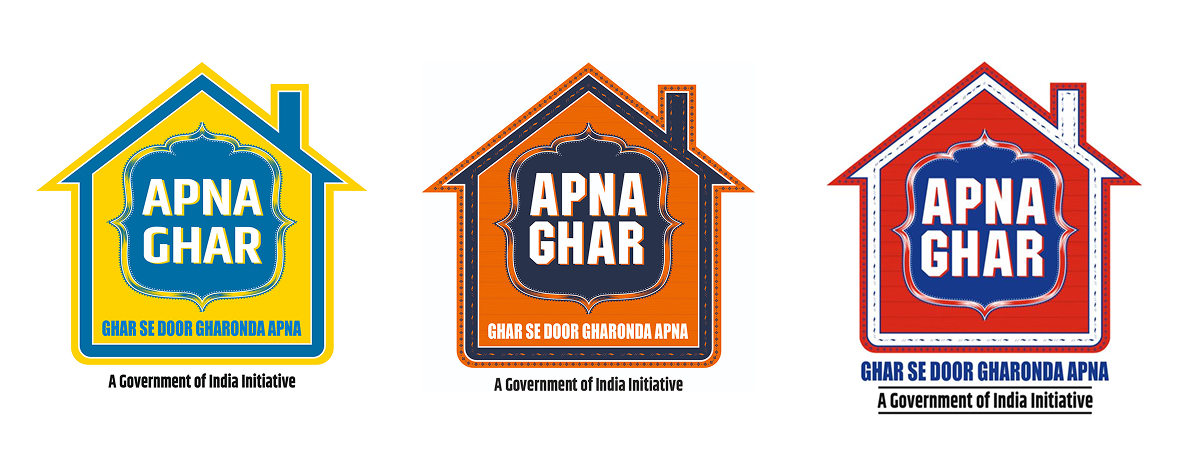
- 05 Aug 2025
In News:
The Ministry of Petroleum and Natural Gas has launched ‘Apna Ghar’, a nationwide initiative to provide resting facilities for truck drivers along highways. The programme, launched in 2025, aims to enhance road safety, driver well-being, and logistics efficiency, addressing the long-standing issue of fatigue and poor hygiene conditions faced by India’s trucking workforce.
Key Features of Apna Ghar
- Coverage: As of July 1, 2025, 368 units with 4,611 beds have been set up at retail fuel outlets along national and state highways by Public Sector Oil Marketing Companies (OMCs).
- Facilities Provided:
- Dormitories (10–30 beds per unit)
- Clean toilets and dedicated bathing areas (Houdas)
- Restaurants/dhabas and self-cooking spaces
- Purified drinking water access
- Technology Integration: Launch of the ‘Apna Ghar’ mobile app for bookings, user feedback, and engagement.
- Implementation Model: Public sector OMCs build and manage facilities at fuel retail stations, ensuring accessibility to drivers during long-haul journeys.
Objectives and Significance
- Road Safety: Reduces driver fatigue, a major cause of road accidents.
- Worker Welfare: Provides dignified working and resting conditions for truckers, a vital yet often informal part of India’s transport ecosystem.
- Economic Impact: Supports supply chain resilience by improving the productivity and well-being of drivers.
- Social Development: Aligns with Sustainable Development Goal 8 (Decent Work and Economic Growth) by promoting safe and humane working environments.
National Waterway-57 (River Kopili)
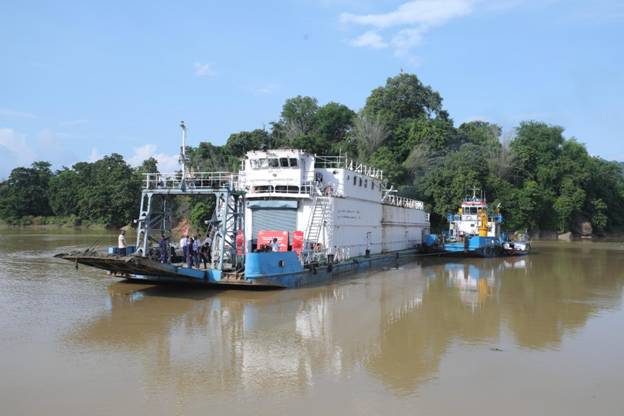
- 05 Aug 2025
In News:
In a landmark development for sustainable logistics in the Northeast, the Kopili River (National Waterway-57) was operationalised with the maiden cargo movement of 300 MT of cement from Chandrapur (Kamrup) to Hatsingimari (South Salmara, Assam).
About the Kopili River
- Origin:Saipong Reserve Forest in the Borail Range, North Cachar Hills, at 1,525 m altitude.
- Length: 256 km (78 km along the Assam–Meghalaya border; 178 km in Assam).
- Basin Coverage: Flows through Meghalaya and Assam, making it an interstate river.
- Significance: Largest south bank tributary of the Brahmaputra in Assam; traverses North Cachar Hill, KarbiAnglong, Nagaon, and Morigaon districts.
- Agricultural Zone: Supports cultivation of rice (winter, summer, autumn), wheat, mustard, and rapeseed in Kamrup and surrounding areas.
Strategic and Policy Significance
- Economic Impact: Reduces road congestion, lowers logistics costs, and provides an efficient alternative for bulk cargo. The trial run replaced the equivalent of 23 truckloads of cement.
- Environmental Gains: Inland water transport curbs emissions and promotes sustainable logistics.
- Regional Development: Enhances connectivity for riverine communities, boosts trade, and unlocks economic opportunities in Assam.
- National Integration: Aligns with Maritime India Vision 2030 and PM Gati Shakti, which seek to create multimodal, integrated transport infrastructure.
8.8-magnitude earthquakenear Russia’s Kamchatka Peninsula
- 02 Aug 2025
In News:
- Recently, a magnitude 8.8 megathrust quake struck off the eastern coast of Kamchatka Peninsula, one of the largest ever recorded globally.
- This quake ranks among the six strongest recorded since modern seismology began—comparable to events in Ecuador (1906) and Chile (2010)—but caused remarkably limited damage.
- It originated in the Kuril–Kamchatka subduction zone, where the denser Pacific Plate thrusts beneath the North American/Okhotsk plates—a region known for frequent tectonic activity. The rupture extended over 200–300 miles underwater.
Tsunami: Warnings, Impact, and Aftermath
- The quake triggered tsunami alerts across the Pacific: Japan, the U.S. West Coast, Alaska, Hawai‘i, Chile, Ecuador (Galápagos), and French Polynesia, among others, issued multi-national warnings.
- In Kamchatka, waves between 3 to 5 meters struck, inundating the port and fish-processing plants in Severo-Kurilsk.
- Locally in Severo-Kurilsk, the quake caused serious structural damage to residential and social infrastructure, once again highlighting its vulnerability—especially recalling the catastrophic 1952 earthquake and tsunami that devastated the town.
Volcanic Aftermath: A Volcanic Chain Reaction
- In the quake’s wake, six volcanoes on Kamchatka became active. Most notably, Krasheninnikov erupted for the first time in 600 years, while others like KlyuchevskayaSopka, Shiveluch, Bezymianny, Karymsky, and Avachinsky also showed signs of eruption.
- This surge in volcanic activity—sparked by seismic fracturing of the crust—is considered a rare geological cascade, comparable to events last seen in 1737. Ash plumes reached up to 10 km height, posing aviation hazards.
Historical Perspective: Kamchatka’s Seismic Legacy
- 1952 Severo-Kurilsk Earthquake (Mag 8.8–9.0) caused a massive tsunami up to 18 meters, killing thousands and destroying the original town. It remains a defining tragedy in Russia’s seismic history.
- Earlier, the 1923 Kamchatka quake (Mag ~7–8) generated a tsunami that reached Hawaii and California’s coastlines, showing long-standing Pacific-wide impacts.
- These events underline the repeatable seismic vulnerability of the region and importance of preparedness.
India's Digital Payments Index
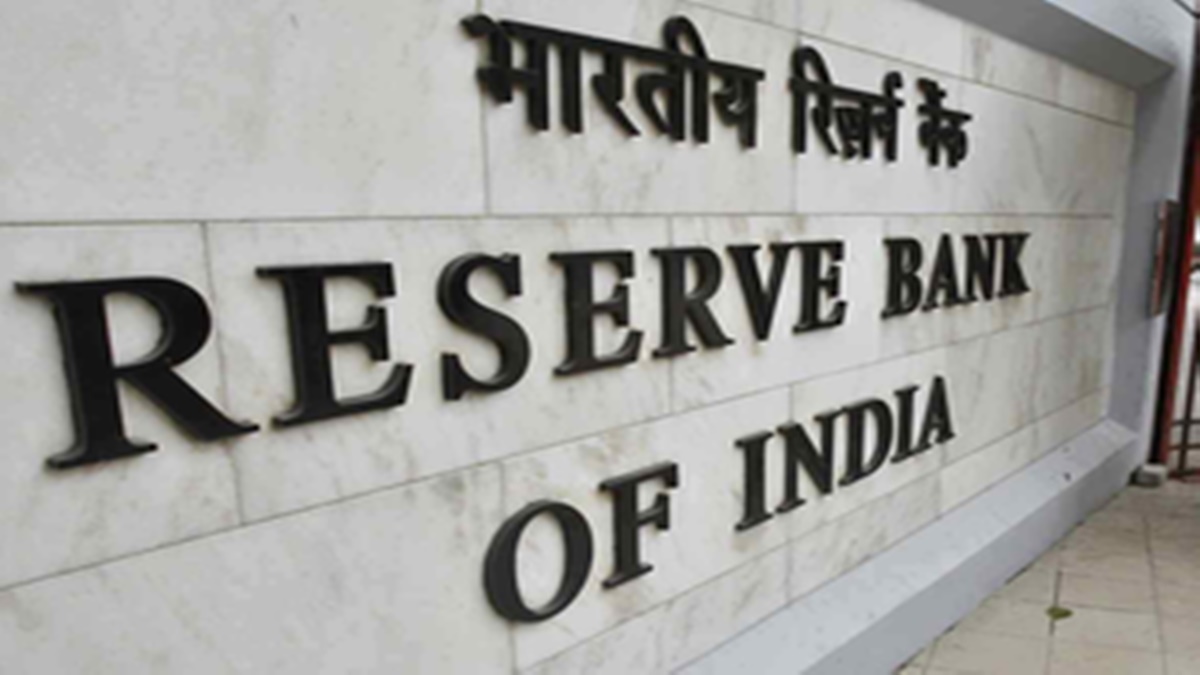
- 02 Aug 2025
In News:
The Reserve Bank of India’s Digital Payments Index (RBI-DPI), launched in January 2021, serves as a pivotal metric to gauge the country's journey toward a digital payments ecosystem. It uses March 2018 as its base year (index = 100) and is published every six months, offering a holistic and dynamic snapshot of digital transaction adoption.
RBI-DPI Calculation: Five Key Parameters
The DPI aggregates various dimensions of digital payments adoption across five weighted components:
|
Parameter |
Weightage |
Focus |
|
Payment Enablers |
25% |
Access infrastructure—mobile/internet penetration, Aadhaar, bank accounts, fintech regulations |
|
Demand-Side Infrastructure |
10% |
Consumer-facing tools—mobile/internet banking, debit/credit cards, FASTags |
|
Supply-Side Infrastructure |
15% |
Merchant tools—PoS terminals, ATMs, QR codes, bank branches, business correspondents |
|
Payment Performance |
45% |
Transaction metrics—volume/value of digital transfers, IMPS/NEFT/UPI usage, paper clearing |
|
Consumer Centricity |
5% |
User experience—awareness, complaint resolution, fraud handling, system uptime |
Drivers Behind the Mar 2025 Jump
As of March 2025, RBI-DPI stood at 493.22, up from 465.33 in September 2024—a year-on-year rise of 10.7%. The key drivers include:
- Supply-side Infrastructure Improvements: Wider merchant adoption of PoS, QR codes, and enhanced banking outreach.
- Payment Performance Surge: Rapid uptake of UPI, IMPS, and other platforms.
- Policy & Technology Boosters: Initiatives such as Digital India, increasing smartphone penetration, and fintech innovation have fueled demand.
Significance for Digital India
- Digital Economy Tracking: DPI is a quantitative barometer of India’s shift to a digital-first economy—enabling policymakers to monitor progress and identify gaps in access or infrastructure.
- Financial Inclusion & Transparency: Growth in DPI indicates deeper penetration of digital finance into rural and marginalized areas, helping combat cash reliance and promote inclusion.
- Policy Formulation & Monetary Insights: Metrics under Payment Performance bolster the RBI’s real-time understanding of transactional trends, aiding monetary policy and regulatory interventions.
- Enhancing Global Fintech Standing: A rising DPI strengthens India’s position as a global digital finance hub, enhancing credibility and attracting investment.
Challenges & Recommendations Ahead
- Digital Divide: Rural areas still lack adequate connectivity and awareness to fully utilize digital tools.
- Cybersecurity & Fraud: As transactions rise, so do risks. Issues like fraud, system downtime, and grievance redressal remain priorities.
- Tech Standardization: Ensuring interoperability and unified standards across platforms is essential.
India Emerges as Global Leader in Real-Time Digital Payments

- 21 Jul 2025
In News:
India has cemented its position as the world’s foremost digital payments economy, with the Unified Payments Interface (UPI) registering 18.39 billion transactions in June 2025, according to a report jointly prepared by the International Monetary Fund (IMF) and FIS Global.
About the Report: Fast Payments 2025
- Prepared by: IMF and FIS Global
- Focus: Assessment of digital public infrastructure enabling real-time payments
- Key Metric Introduced: Faster Payment Adoption Score (FPAS) – a benchmark for evaluating the scale and effectiveness of fast payment systems across 30 countries
India’s Standout Performance
- Top Global Rank: India scored 87.5% on FPAS, ranking highest globally—outpacing Brazil, Singapore, the United Kingdom, and the United States.
- UPI Ecosystem Scale:
- Handles over 640 million daily transactions
- Caters to approximately 491 million users and 65 million merchants
- Supported by a network of 675+ banks
- Speed and Cost Efficiency:
- Payment settlement within 5 seconds
- Transactions are virtually cost-free for users
- International Footprint:
- UPI services are now live in seven countries, including France, UAE, and Singapore
- India is advocating its adoption within the BRICS+ grouping as a model for cross-border payment interoperability
Key Strengths of UPI Infrastructure
- Interoperability: Seamless transactions across multiple platforms (PhonePe, Google Pay, Paytm, etc.) and banks
- Inclusivity Features:
- Aadhaar-based linking
- USSD-based services for feature phones
- Multilingual interfaces to facilitate rural access
- Built on India Stack: Utilizes digital infrastructure components like Aadhaar, eKYC, DigiLocker, and Account Aggregator
- Security Framework:
- Real-time fraud detection
- Tokenization and robust regulatory oversight
- Collaborative Ecosystem: A joint effort of NPCI, fintech players, and RBI, ensuring scalability and resilience
Prithvi-II and Agni-I Ballistic Missiles
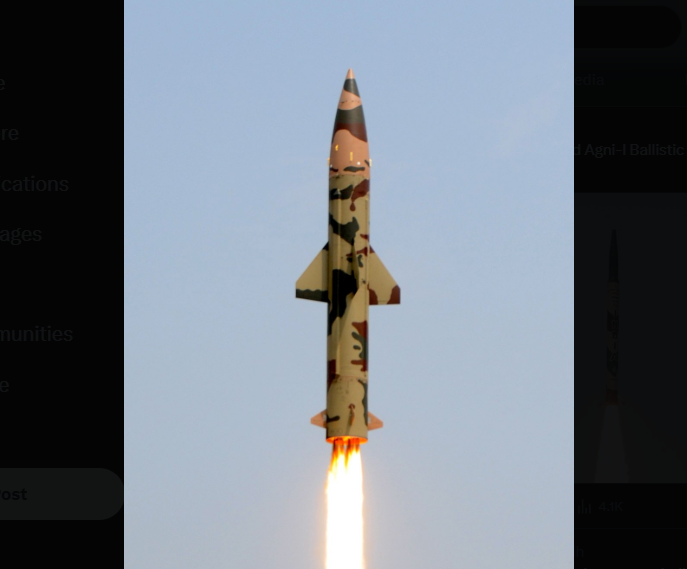
- 19 Jul 2025
In News:
India recently conducted successful test-firings of its nuclear-capable short-range ballistic missiles Prithvi-II and Agni-I from the Integrated Test Range (ITR), Chandipur, Odisha. The trials aimed to validate operational readiness and technical reliability of India’s strategic missile systems.
These tests follow closely on the heels of the Indian Army's successful high-altitude test of the Akash Prime air defence system in Ladakh, underscoring India’s advancing indigenous defence capabilities.
Strategic Significance
- Conducted by: Strategic Forces Command (SFC) under routine training and validation exercises.
- Developed by: Defence Research and Development Organisation (DRDO) under the Integrated Guided Missile Development Programme (IGMDP).
- Purpose:
- To validate accuracy, technical parameters, and combat readiness.
- To reinforce India’s nuclear deterrence and second-strike capability.
- To ensure strategic preparedness post the May 2025 Indo-Pak conflict.
Prithvi-II Missile: Key Features
|
Parameter |
Details |
|
Type |
Short-range, surface-to-surface ballistic missile |
|
Range |
~350 km |
|
Propulsion |
Liquid-fuelled |
|
Payload Capacity |
Up to 500 kg |
|
Warhead Type |
Conventional and nuclear |
|
Navigation |
Advanced inertial navigation system |
|
Deployment |
Road-mobile launcher |
|
Speed |
Above Mach 1 |
|
Role |
Part of India’s tactical nuclear strike capability |
Agni-I Missile: Key Features
|
Parameter |
Details |
|
Type |
Short-range, single-stage ballistic missile |
|
Range |
700–900 km |
|
Propulsion |
Solid-fuelled |
|
Payload Capacity |
Up to 1,000 kg |
|
Warhead Type |
Conventional and nuclear |
|
Accuracy |
High precision with advanced guidance |
|
Induction |
Early 2000s, operational with Indian Army |
|
Strategic Role |
Integral to India’s minimum credible deterrence posture |
Behdeinkhlam Festival
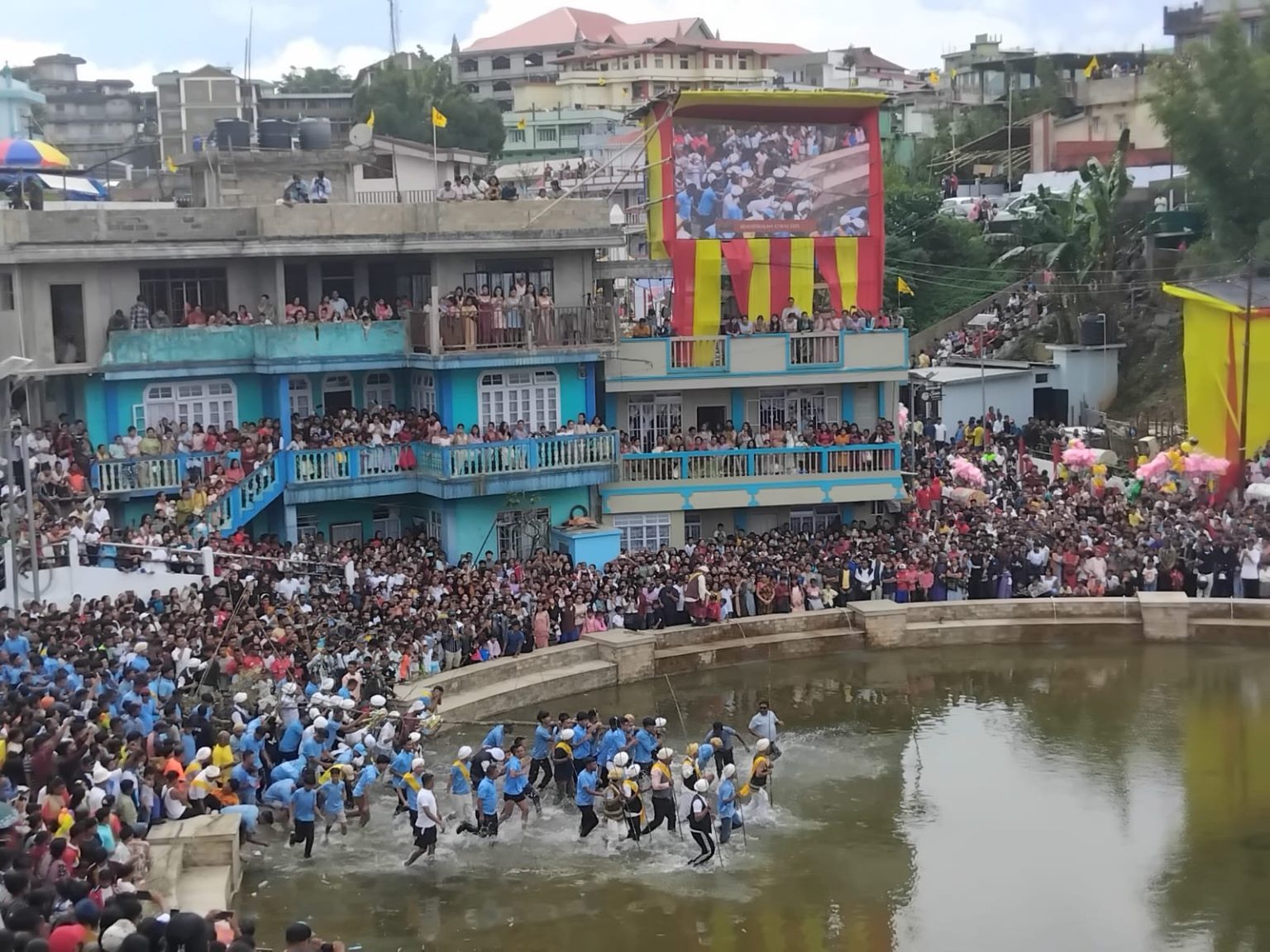
- 17 Jul 2025
In News:
The Behdeinkhlam Festival, a vibrant cultural and religious celebration of the Pnar community in Jowai, Meghalaya, was recently observed with great enthusiasm. Blending age-old indigenous rituals with contemporary social messages, the festival reflects the rich cultural heritage and evolving societal concerns of the Jaintia Hills region.
Etymology and Meaning
- The term “Behdeinkhlam” comes from the Pnar language:
- “Beh Dien” – to drive away with sticks or prayers.
- “Khlam” – refers to plague, pestilence, or disease.
- Thus, the name signifies a ritual expulsion of illness, evil spirits, and misfortune, historically associated with diseases like cholera.
Cultural and Religious Significance
- Primarily celebrated by the Pnars, a sub-tribe of the Jaintia community, the festival is a symbolic act of:
- Protecting society from disease.
- Invoking blessings for a bountiful harvest.
- Promoting community health, peace, and prosperity.
- It plays a crucial role in preserving the Niamtre faith, the indigenous religion of the Jaintia people, through intergenerational participation in ritual practices.
Timing and Duration
- Held annually in July, right after the sowing season, the festival lasts for three days.
- The timing is agriculturally significant, linking health rituals with hopes for a successful farming cycle.
Key Rituals and Celebrations
- Symbolic Rituals:
- Men go around beating the roofs of houses with bamboo poles to drive away evil spirits and symbolic disease.
- Tree trunks known as Dein Khlam and Khnong—rounded, straight, and polished—are brought from the forest and used in the main rituals.
- Community Processions:
- A sacred wooden post called Symbud Khnong is carried around the town and installed as a spiritual safeguard.
- Gender Roles in Rituals:
- Men perform dances, carry the sacred logs, and lead the processions.
- Women play a vital ceremonial role by preparing sacrificial food for ancestral spirits.
- Dance and Music: On the final day, the community gathers at Aitnar, where both young and old dance to the rhythmic beats of pipes and drums.
- Dad-Lawakor – Traditional Game: A unique football-like game called Dad-lawakor is played at Mynthong, showcasing indigenous sporting traditions and community bonding.
Contemporary Relevance
- In recent years, the festival has evolved to incorporate modern themes such as:
- Awareness against drug abuse
- Prevention of alcoholism
- Climate change consciousness
- These additions reflect a harmonious blending of tradition and modernity, where festivals serve both spiritual and civic functions.
INS Nistar

- 14 Jul 2025
In News:
In a significant stride towards self-reliance in defence manufacturing under the Aatmanirbhar Bharat initiative, the Indian Navy has inducted INS Nistar, its first indigenously designed and built Diving Support Vessel (DSV). Developed by Hindustan Shipyard Limited (HSL), Visakhapatnam, INS Nistar enhances India’s capabilities in deep-sea rescue, submarine emergency response, and underwater operations, placing India among a select group of nations with such advanced maritime assets.
Key Features and Capabilities
- Size and Endurance:
- Length: ~118–120 meters
- Displacement: Over 10,000 tonnes
- Endurance: Capable of operating for over 60 days at sea
- Diving and Rescue Capabilities:
- Equipped for saturation diving up to 300 meters and side diving stage operations up to 75 meters
- Integrated with Remotely Operated Vehicles (ROVs) for diver monitoring and salvage missions up to 1000 meters below sea level
- Serves as the Mother Ship for the Deep Submergence Rescue Vehicle (DSRV), crucial for submarine crew evacuation in emergencies
- Medical and Operational Infrastructure:
- Includes an 8-bed hospital, ICU, operation theatre, and hyperbaric chambers for diver treatment and recovery
- Fitted with a 15-tonne subsea crane, helicopter landing deck, and Side Scan SONAR for multi-role logistics and salvage operations
- Navigation and Control: Integrated Dynamic Positioning System (DPS) ensures precision during complex underwater missions
Indigenous Content and Industrial Participation
- Indigenous Content: Approximately 75–80%
- Over 120 Indian MSMEs contributed to the vessel’s construction
- Compliant with Indian Register of Shipping (IRS) classification standards
Strategic and Symbolic Significance
- Bridges critical capability gaps in submarine rescue, deep-sea salvage, and maritime disaster response
- Strengthens India’s strategic posture in the Indian Ocean Region (IOR), ensuring rapid and self-reliant response to undersea emergencies
- Reinforces India’s position as an emerging blue water navy
- Symbolically revives the legacy of the erstwhile Soviet-origin INS Nistar (commissioned in 1971), reaffirming continuity and progress in naval capabilities
Operation Deep Manifest

- 03 Jul 2025
In News:
The Directorate of Revenue Intelligence (DRI), under the Central Board of Indirect Taxes and Customs (CBIC), Ministry of Finance, launched “Operation Deep Manifest”, resulting in the seizure of Pakistani-origin goods worth ?9 crore.
Key Highlights:
- Seizure Details:39 containers carrying 1,115 metric tonnes of goods—primarily dry dates—were intercepted at Nhava Sheva Port. These goods were falsely declared as originating from the UAE.
- Route Manipulation:The consignments were illicitly routed via Dubai’s Jebel Ali Port after being shipped from Karachi, Pakistan, to obscure their true origin. Shipping documents were falsified and containers were switched during transshipment to evade detection.
- Violation of Policy:This seizure comes after India’s comprehensive ban on Pakistani-origin goods, which took effect on May 2, 2025, following the Pahalgam terror attacks. This replaced the earlier 200% customs duty imposed post-Pulwama (2019) and represents a zero-tolerance economic policy toward Pakistan.
- Financial and Security Links:Investigations uncovered financial linkages with Pakistani and UAE-based entities, pointing to an organized smuggling network with possible illicit financial flows and national security implications.
- Enforcement Action:A partner from one of the importing firms was arrested on June 26, and further criminal and financial investigations are ongoing.
Significance:
- National Security:Helps prevent economic infiltration from hostile states and curbs funding channels that could support anti-national activities.
- Trade Compliance:Acts as a deterrent against third-country transshipment—a common method to bypass sanctions or import bans.
- Tech-Driven Enforcement:Utilized document forensics, data analytics, and container surveillance to detect misdeclarations and track suspect cargo routes.
- Reinforces Policy Posture:Strengthens India's position of economic disengagement with Pakistan in response to cross-border terrorism.
The Emergency in India (1975–1977)

- 28 Jun 2025
In News:
The declaration of Emergency in India from 25 June 1975 to 21 March 1977 marks one of the most debated and transformative chapters in the country’s post-independence history. Proclaimed under Article 352 of the Constitution citing “internal disturbance”, this period had far-reaching legal, political, and social consequences. It served as a stress test for India’s democratic institutions and led to significant constitutional reforms.
Background:
- The early 1970s were marked by growing political discontent. Nationwide protests, especially in Bihar and Gujarat, were spearheaded by Jayaprakash Narayan against issues such as rising unemployment, inflation, corruption, and misuse of political power.
- The immediate provocation came from the Allahabad High Court’s judgment on 12 June 1975, which found Prime Minister Indira Gandhi guilty of electoral malpractice in her 1971 Lok Sabha campaign. The Court disqualified her from contesting elections for six years under the Representation of the People Act, 1951.
- Though the Supreme Court granted a conditional stay, political pressure intensified, with mass movements demanding her resignation.
Proclamation of Emergency
On 25 June 1975, President Fakhruddin Ali Ahmed, on the advice of the Prime Minister, declared a national Emergency under Article 352, citing internal disturbance. This was the third Emergency in India — the first two being during external wars (1962 with China and 1971 with Pakistan). However, this was the first peacetime Emergency.
Constitutional Basis
At that time, Article 352 allowed Emergency on three grounds:
- War
- External Aggression
- Internal Disturbance (later amended to “armed rebellion” by the 44th Amendment, 1978)
Suspension of Fundamental Rights
Two days later, on 27 June 1975, the government invoked:
- Article 358: Automatically suspended the freedoms under Article 19 (freedom of speech, assembly, movement, etc.)
- Article 359: Allowed suspension of Articles 14, 21, and 22, stripping protections related to equality before law, life and personal liberty, and protection against preventive detention.
Citizens lost access to courts for constitutional remedies. Prominent opposition leaders, including Jayaprakash Narayan, Morarji Desai, Atal Bihari Vajpayee, and L.K. Advani, were arrested under the Maintenance of Internal Security Act (MISA). According to the Shah Commission, around 35,000 individuals were detained without trial.
Censorship and Media Suppression
From 26 June 1975, press censorship was imposed. Newspapers were mandated to get clearance from government-appointed censors before publication. International news coverage was also tightly controlled, with telex messages of foreign correspondents placed under surveillance.
Key developments:
- On 20 July 1975, the Board of Film Censors was restructured to impose stricter control over cinema.
- On 1 February 1976, the four national news agencies — PTI, UNI, Samachar Bharati, and Hindustan Samachar — were merged into ‘Samachar’.
- The Press Council of India was dissolved.
Constitutional Amendments and Legislative Overreach
Several constitutional amendments were enacted to consolidate power:
- 38th Amendment (1975): Made the President’s Emergency declaration non-justiciable.
- 39th Amendment (1975): Excluded Prime Minister’s election from judicial review.
- 42nd Amendment (1976) (termed “Mini-Constitution”):
- Gave primacy to Directive Principles over Fundamental Rights
- Extended Lok Sabha and State Assembly terms from 5 to 6 years
- Limited judicial review, centralised authority
- Empowered Parliament to amend the Constitution without court scrutiny
Sterilisation Campaign
One of the most controversial aspects was the forced sterilisationprogramme led by Sanjay Gandhi. While aimed at population control, it resulted in widespread coercion and human rights violations.
- 1975–76: 26.42 lakh sterilisation procedures
- 1976–77: 81.32 lakh
- Total over two years: 1.07 crore
- Many were linked to access to ration cards, housing, loans, and employment
End of Emergency and Democratic Reversal
The Emergency was revoked on 21 March 1977. In the subsequent general elections (March 1977), the Congress party was defeated, and the Janata Party under Morarji Desai assumed power. This marked the first non-Congress government at the Centre
Post-Emergency Reforms: The Shah Commission and 44th Amendment
The Shah Commission (1977–79)
Set up in May 1977, chaired by Justice J.C. Shah, it investigated:
- Illegal arrests and detentions
- Press censorship
- Forced sterilisation
- Bureaucratic misuse and political excesses
44th Constitutional Amendment (1978)
To prevent future misuse:
- Replaced “internal disturbance” with “armed rebellion” as a ground for Emergency
- Restored judicial review of Emergency proclamations
- Safeguarded Fundamental Rights, particularly Articles 20 and 21
- Ensured Cabinet approval was mandatory before Emergency declaration
11th International Day of Yoga (IDY) – 2025

- 22 Jun 2025
In News:
The 11th International Day of Yoga (IDY) will be observed on June 21, 2025, under the theme “Yoga for One Earth, One Health”. The theme emphasizes the connection between individual well-being and planetary health, aligned with India’s G20 vision of “One Earth, One Family, One Future.”
About the International Day of Yoga
- What it is: An annual global observance promoting yoga as a holistic health practice for physical, mental, and emotional well-being in harmony with nature.
- Adoption: Declared by the United Nations General Assembly (UNGA) through Resolution 69/131 on December 11, 2014, following India's proposal.
- First Observed: June 21, 2015
- Nodal Ministry: Ministry of AYUSH, Government of India
Theme for 2025: “Yoga for One Earth, One Health”
- Focuses on the interdependence between human health and environmental sustainability.
- Reinforces yoga’s role in achieving sustainable lifestyles and climate consciousness.
Key Objectives
- Promote mind-body balance, emotional stability, and overall well-being through yoga.
- Raise global awareness on yoga’s health and ecological benefits.
- Encourage adoption of yoga as part of daily life for sustainable living.
- Strengthen India’s soft power and global leadership in wellness traditions.
Highlights and Participation
- Global Reach: Adopted by 175 UN Member States. Global participation has grown from 9 crore in 2018 to 24.53 crore in 2024.
- Mass Events: Celebrated across countries with support from state governments, Indian embassies, UN bodies, and civil society.
- Inclusive Message: Yoga Day’s logo and themes emphasize unity, well-being, and coexistence with nature.
Significance
- Public Health Tool: Promotes a low-cost, accessible, preventive healthcare practice.
- Sustainability Alignment: Advocates for climate-sensitive living and ecological harmony.
- Cultural Diplomacy: Enhances India’s global stature as the birthplace of yoga and a leader in wellness diplomacy.
- Soft Power Projection: Reflects India’s cultural values and promotes its influence through global well-being initiatives.
Bhagwan Birsa Munda

- 11 Jun 2025
In News:
On his 125th death anniversary (Balidan Diwas), the Prime Minister of India paid tribute to Bhagwan Birsa Munda, hailing his pioneering role in tribal empowerment and anti-colonial resistance.
Early Life and Identity
- Born: 15 November 1875, Ulihatu, Chotanagpur Plateau (now in Jharkhand).
- Tribe: Munda.
- Title: Revered as “Dharti Aaba” (Father of the Earth).
- Education: Attended Christian missionary schools in Chaibasa; later rejected colonial influence and converted to Vaishnavism, blending it with tribal spirituality.
- Founder of: The Birsait sect, advocating moral reform and cultural awakening among Adivasis.
Role in Freedom Struggle & Tribal Mobilisation
Resistance Against Exploitation:
- Zamindari System: Opposed British-imposed land systems that dismantled the Khuntkatti tribal land tenure, dispossessing tribals and reducing them to bonded labourers.
- Beth Begari: Led resistance against forced labour and revenue policies.
- Forest Rights: Fought against British encroachment and resource extraction in forests.
Cultural and Spiritual Renaissance:
- Condemned social evils like black magic and alcoholism.
- Mobilised tribals using tribal songs, attire, drums, and community gatherings.
- Advocated tribal self-rule and cultural pride against the oppression by Dikus (outsiders).
Ulgulan Movement (1895–1900): The Great Tumult
- Nature: A widespread anti-colonial rebellion across present-day Jharkhand, Odisha, and Bengal.
- Strategy: Guerrilla warfare, targeting British outposts, churches, and police stations.
- Slogan: “Abua Raj setar jana, Maharani Raj tundu jana” (Let the rule of our people begin, let the Queen’s rule end).
- Emphasized a vision of egalitarian tribal raj rooted in indigenous governance systems.
Arrest, Martyrdom, and Legacy
- Arrested: 1895; Died: 9 June 1900 in Ranchi Jail under mysterious circumstances.
- Though the rebellion was crushed, it led to the Chotanagpur Tenancy Act, 1908, securing tribal land rights.
Recognition and Legacy
- Declared as “Bhagwan” (Lord) by tribal communities for his cultural leadership and resistance.
- Institutions named in his honour: Birsa Agricultural University, Birsa Institute of Technology, etc.
- November 15 (birth anniversary) declared Janjatiya Gaurav Diwas (Tribal Pride Day) in 2021 by the Government of India.
- Symbol of tribal assertion, indigenous identity, and early resistance to colonialism in India.
One State, One RRB Policy
- 10 Apr 2025
In News:
The Government of India, through the Ministry of Finance, has implemented the "One State, One RRB" policy effective from May 1, 2025, aimed at consolidating 26 Regional Rural Banks (RRBs) across 10 states and 1 Union Territory, thereby reducing the total number of RRBs to 28. This move follows the recommendation of the Dr. Vyas Committee and is intended to enhance the performance and outreach of RRBs.
Objectives of the Policy
- Improve operational efficiency and governance.
- Rationalize costs and optimize resources (human and technological).
- Eliminate intra-state competition among sponsor banks.
- Promote uniform service delivery through technological integration.
About Regional Rural Banks (RRBs)
- Established: 1975 under the Regional Rural Banks Act, 1976.
- Recommended by: Narasimham Committee (1975).
- Ownership Pattern:
- Government of India – 50%
- State Government – 15%
- Sponsor Bank – 35%
Regulatory Structure
- Regulated by: Reserve Bank of India (RBI)
- Supervised by: NABARD (National Bank for Agriculture and Rural Development)
Role and Objectives
- Provide institutional credit to rural India.
- Support priority sectors like agriculture, MSMEs, and rural artisans.
- Ensure financial inclusion among farmers, labourers, and small entrepreneurs.
Impact of the Reform
- Operational Scale: Enhanced credit delivery across wider geographies.
- Technological Standardization: Easier integration of IT infrastructure.
- Unified Governance: One sponsor bank per state improves accountability.
- Performance: RRBs recorded an all-time high net profit of ?7,571 crore in FY 2023–24.
- Asset Quality: GNPA (Gross Non-Performing Assets) stood at 6.1%, the lowest in a decade.
Poshan Pakhwada 2025 and Palna Scheme
- 10 Apr 2025
In News:
The Ministry of Women and Child Development (MoWCD) is spearheading a dual approach to address malnutrition and childcare challenges in India through two flagship initiatives—Poshan Pakhwada 2025 and the Palna Scheme under Mission Shakti.
Poshan Pakhwada 2025
- 7th edition observed from April 8–22, 2025, under Poshan Abhiyaan.
- Focuses on four key themes:
- Nutrition in the first 1,000 days (conception to age two).
- Promotion of the Poshan Tracker digital platform.
- Community-based Management of Acute Malnutrition (CMAM).
- Encouraging a healthy lifestyle to reduce childhood obesity.
- Poshan Tracker App (AI-enabled; launched in 2021):
- Registers all Anganwadi Centres (AWCs).
- Enables real-time monitoring of beneficiaries, meal distribution, and health data.
- Allows family self-registration via web.
- CMAM protocol (introduced in 2023): Empowers Anganwadi workers to detect and manage malnutrition at the grassroots.
- Special focus on tribal and remote areas, promoting awareness on breastfeeding, balanced diets, and early stimulation.
- Campaign supported by 18 partner ministries, with outreach via village camps, home visits, and awareness drives.
Palna Scheme under Mission Shakti
- Centrally sponsored scheme launched in 2022, succeeding the National Crèche Scheme.
- Operates under the Samarthya sub-scheme of Mission Shakti.
- Aims to provide quality crèche services for children aged 6 months to 6 years, especially for working mothers.
Key Features:
- Implemented by: Ministry of Women and Child Development (MoWCD).
- Funding Ratio:
- 60:40 (Centre: State),
- 90:10 for NE and special category states.
- Two crèche models:
- Standalone Crèches near homes/workplaces.
- Anganwadi-cum-Crèches (AWCCs) integrated within Anganwadi Centres.
- Facilities Provided:
- Nutritional meals, growth monitoring, immunization.
- Early stimulation and pre-school education.
- Support for continued breastfeeding.
- Crèche Capacity: Each unit supports up to 25 children.
- As of March 2025:
- 11,395 AWCCs approved across 34 States/UTs; 1,761 operational, catering to ~28,783 children.
- 1,284 Standalone Crèches operational with ~23,368 children enrolled.
- 17,000 new AWCCs planned for 2024–25.
- Legal Backing: Mandated in workplaces with 50+ employees under the Maternity Benefit Act (amended).
Significance for India
Together, Poshan Pakhwada and Palna contribute to achieving SDG 2 (Zero Hunger) and SDG 3 (Good Health and Well-being) by ensuring a lifecycle approach to nutrition and holistic early childhood care. They reflect the government's commitment to digital governance, gender empowerment, and inclusive development.
6th BIMSTEC Summit
- 03 Apr 2025
In News:
- The 6th BIMSTEC Summit is scheduled for April 4, 2025, in Bangkok, Thailand, under the theme "Prosperous, Resilient, and Open BIMSTEC."
- It aims to deepen cooperation among member states on trade, security, connectivity, and sustainable development, while endorsing the long-term roadmap titled Bangkok Vision 2030.
About BIMSTEC (Bay of Bengal Initiative for Multi-Sectoral Technical and Economic Cooperation)
- Established: 6 June 1997 (via Bangkok Declaration)
- Initial Name: BIST-EC (Bangladesh, India, Sri Lanka, Thailand Economic Cooperation)
- Evolution:
- Renamed BIMST-EC in 1997 with Myanmar’s inclusion
- Full members as of 2004: Bangladesh, Bhutan, India, Myanmar, Nepal, Sri Lanka, and Thailand
- Headquarters: Dhaka, Bangladesh (Operational since 2014)
- Chairmanship: Rotational, alphabetical order
- Structure: Guided by the BIMSTEC Charter (adopted in 2022)
Objectives and Strategic Focus
- Foster economic and technical cooperation among littoral states of the Bay of Bengal
- Promote collaboration in trade, energy, transport, security, technology, and environmental protection
- Enhance regional connectivity through infrastructure, digital links, and maritime transport
- Address shared challenges like terrorism, poverty, natural disasters, and climate change
- Strengthen people-to-people exchanges and institutional frameworks
Highlights of the 6th Summit
- Follows the 5th Summit held virtually in Colombo (2022)
- Preceded by:
- Senior Officials’ Meeting (April 2, 2025)
- Foreign/External Affairs Ministers’ Meeting (April 3, 2025)
Key Agendas and Agreements:
- 6th BIMSTEC Summit Declaration – outlining vision and action points
- Bangkok Vision 2030 – strategic roadmap for future cooperation
- Agreement on Maritime Transport Cooperation – enhancing cargo and passenger movement across Bay of Bengal
- MoUs with:
- Indian Ocean Rim Association (IORA)
- United Nations Office on Drugs and Crime (UNODC)
- Rules of Procedure for BIMSTEC Mechanisms – to operationalize the 2022 Charter
- Report of the Eminent Persons Group – outlines BIMSTEC's future direction; implementation has begun
Sectoral Priorities
- Reforms in 2021 streamlined BIMSTEC’s focus to seven core sectors:
- Trade, Investment and Development
- Environment and Climate Change
- Security and Counter-Terrorism
- Agriculture and Food Security
- Connectivity
- People-to-People Contact
- Science, Technology and Innovation
- Emerging Focus Areas: Blue Economy and Disaster Risk Management
Significance
- Geostrategic Bridge: Connects South Asia and Southeast Asia, supplementing SAARC and ASEAN efforts
- Reinforces BIMSTEC’s role as the sole regional platform in the Bay of Bengal
- Strengthens institutional architecture for regional peace, prosperity, and resilience
UK–Mauritius Deal on Chagos Islands
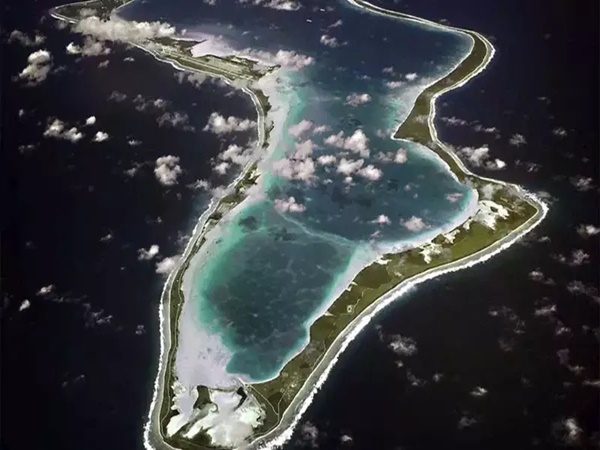
- 25 May 2025
Background:
The Chagos Archipelago, a remote group of over 60 islands in the Indian Ocean, has been at the center of a decades-long sovereignty dispute between the United Kingdom and Mauritius. The UK separated the islands from Mauritius in 1965, three years before Mauritius gained independence, and established the British Indian Ocean Territory (BIOT).
In the 1970s, the UK allowed the United States to build a military base on Diego Garcia, the largest island in the archipelago. The local Chagossian population was displaced, leading to international criticism and legal challenges.
Recent Development
In May 2025, the UK government, led by Prime Minister Keir Starmer, agreed to transfer sovereignty of the Chagos Islands to Mauritius. The agreement follows the 2019 advisory opinion of the International Court of Justice (ICJ) and United Nations resolutions urging the UK to end its colonial administration of the islands.
Key Provisions of the Treaty
- Sovereignty Transfer: Mauritius regains control over the Chagos Archipelago, including Diego Garcia.
- Lease Agreement: The UK will lease back Diego Garcia from Mauritius for 99 years, paying approximately:
- £101–136 million annually, totaling over £3 billion ($4 billion) across the lease term.
- Strategic Base Retained: The US-UK military base on Diego Garcia will continue operating. It is vital for counter-terrorism, surveillance, and regional stability in South Asia, the Middle East, and East Africa.
Geographical Significance
- The Chagos Islands lie about 500 km south of the Maldives and are part of the Chagos–Laccadive Ridge.
- It is the southernmost archipelago of the ridge and is located over 9,000 km southeast of the UK.
- Major islands: Salomon Islands, PerosBanhos, Diego Garcia.
Strategic and Military Importance
- Diego Garcia serves as a key US military outpost, supporting operations in multiple global regions.
- Described as an “almost indispensable platform”, the base has hosted long-range bombers and surveillance missions.
- Recently, it has been used for nuclear-capable bomber deployments and airstrike missions.
Local and International Reactions
- Mauritius: The agreement is celebrated as the completion of its decolonisation process. Chagossian exiles expressed joy over the chance to return to their ancestral lands.
- India: Strongly supported the sovereignty restoration, aligning with its principles on decolonisation, sovereignty, and territorial integrity. India views the resolution as a positive development for Indian Ocean regional stability.
Criticism and Concerns
- Some UK opposition leaders raised concerns about national security and financial burden on taxpayers.
- There are apprehensions about Mauritius’s close trade ties with China, though the deal includes safeguards against “malign influence.”
Metal-Free Catalyst for Hydrogen Fuel Production

- 08 May 2025
In News:
In a significant breakthrough for clean energy technology, Indian scientists have engineered a metal-free catalyst capable of generating hydrogen fuel by harnessing mechanical energy. This innovation marks a major step forward in sustainable hydrogen production, aligning closely with India’s National Green Hydrogen Mission and its goal to lead in green energy solutions.
What is the Metal-Free Catalyst?
The catalyst is a specially designed donor-acceptor covalent organic framework (COF) that functions as a piezocatalyst without relying on any metal components. It can efficiently split water molecules to produce hydrogen gas (H?) when subjected to mechanical forces such as vibrations or pressure.
Development and Collaboration
This pioneering catalyst was developed at the Jawaharlal Nehru Centre for Advanced Scientific Research (JNCASR) in Bengaluru, under the leadership of Professor Tapas K. Maji. The project was carried out in collaboration with the Indian Institute of Science Education and Research (IISER) Pune and Wroc?aw University of Science and Technology in Poland.
Key Features of the Catalyst
- Metal-Free Composition: Made entirely from organic molecules, specifically TAPA (donor) and PDA (acceptor), connected through stable imide bonds.
- Ferrielectric Ordering (FiE): This internal property creates strong electric fields within the material, driving the catalytic water-splitting process.
- Porous, Sponge-like Structure: Enhances water permeability and promotes efficient separation of charges generated during the reaction.
- Mechanically Activated: The catalyst produces electron-hole pairs when exposed to mechanical pressure, enabling effective hydrogen generation.
Significance and Impact
- Environmentally Friendly: Eliminates the need for expensive and potentially harmful metal-based catalysts by using sustainable organic materials.
- Energy-Efficient: Utilizes ambient mechanical energy sources, such as vibrations or applied pressure, to power hydrogen production.
- Supports India’s Clean Energy Goals: Advances the objectives of the National Green Hydrogen Mission, strengthening India’s position in global clean energy innovation and reducing dependence on fossil fuels.
- Scalable and Cost-Effective: Offers a practical and affordable alternative to conventional metal-based hydrogen production technologies, making it suitable for widespread adoption.
Red-Crowned Roofed Turtle
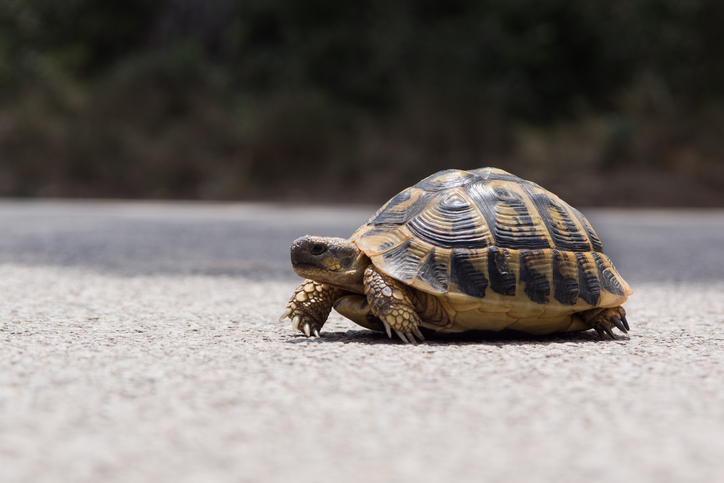
- 02 May 2025
In News:
After nearly 30 years of absence, the Red-Crowned Roofed Turtle (Batagurkachuga) has been rediscovered in the Ganga River — a significant success for conservation efforts aimed at reviving endangered freshwater species.
Overview
- Commonly known as the Bengal Roof Turtle, it is a rare species of freshwater turtle found only in South Asia.
- Scientific Name: Batagurkachuga
Geographical Distribution
- Native Range: India, Nepal, and Bangladesh.
- Historical Presence: Widely distributed across the Ganga River system in India and Bangladesh, with additional presence in the Brahmaputra River basin.
- Current Habitat in India: The most viable population is now confined to the National Chambal Sanctuary, a protected riverine stretch for species like gharials and turtles.
Distinctive Features
- Size: Medium-sized species, females can grow up to 56 cm in length and weigh up to 25 kg, while males are significantly smaller.
- Coloration: Notable for their reddish-orange head marked with a black crown, and a greenish-brown carapace patterned with yellow streaks.
- Plastron (under-shell): Yellow with distinctive black markings.
- Adaptations: Possess a broad head, strong jaws, and webbed feet, suited for an aquatic lifestyle.
- Diet: Omnivorous — consumes both plant material and small aquatic organisms.
Conservation Status
- IUCN Red List: Critically Endangered
- Wildlife (Protection) Act, 1972: Listed under Schedule I – providing the highest level of legal protection in India.
- CITES: Included in Appendix II, regulating international trade.
Aadhaar Governance Portal
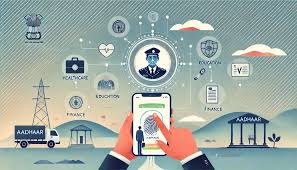
- 07 Mar 2025
In News:
The government has introduced the Aadhaar Governance Portal, a new initiative developed by the Ministry of Electronics and Information Technology (MeitY). This platform is designed to streamline the approval process for Aadhaar authentication requests and further enhance citizen services.
Key Features:
- Simplified Authentication Process: The portal offers a step-by-step guide to help both government and private entities apply for Aadhaar authentication. It aims to improve the overall delivery of services, reducing administrative delays.
- Seamless Onboarding: Entities can now access detailed Standard Operating Procedures (SOPs) for onboarding Aadhaar authentication services. The portal serves as a comprehensive resource for entities seeking authentication approval.
- Wide Applications Across Sectors: The portal will be used for Aadhaar authentication in multiple sectors, including healthcare, education, e-commerce, and hospitality. It enables citizens to access essential services with ease.
- Face Authentication: The integration of face authentication in customer-facing applications will allow for anytime, anywhere authentication, enhancing the flexibility and accessibility of services.
Impact on Governance:
This initiative comes as part of the government's broader agenda to support good governance through technology and improve the delivery of welfare services. The new rules, introduced under the Aadhaar Authentication for Good Governance (Social Welfare, Innovation, Knowledge) Rules, 2025, aim to enhance service delivery and simplify processes for both citizens and service providers.
Role of Aadhaar:
Aadhaar, a 12-digit unique identification number, serves as proof of identity linked to an individual’s biometric and demographic information. Launched by UIDAI in 2009, Aadhaar has become integral to the delivery of government services and is now widely used by private entities for identification purposes.
With its ability to ensure verified identities, Aadhaar is crucial for streamlining processes in sectors ranging from welfare distribution to digital banking.
Amazon’s Ocelot Quantum Chip
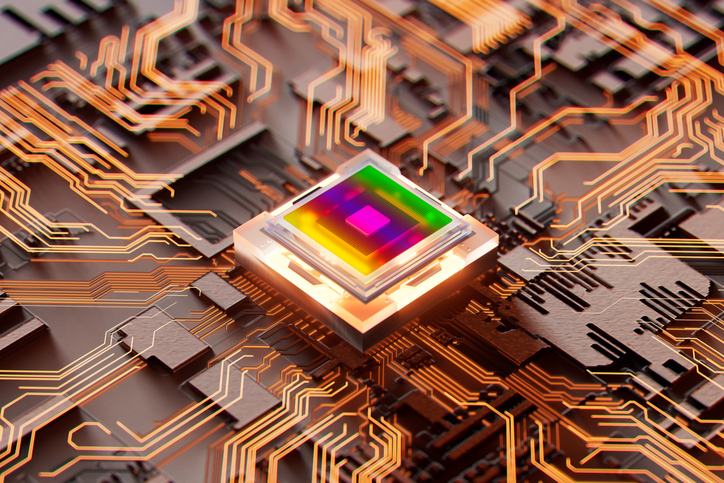
- 02 Mar 2025
In News:
Amazon Web Services (AWS) has unveiled its first in-house quantum computing chip, Ocelot, aimed at significantly reducing the development time for commercially viable quantum computers.
Key Highlights:
- Developed By: AWS Center for Quantum Computing at the California Institute of Technology.
- Objective: To accelerate the development of scalable and error-resilient quantum computers using novel architecture.
What is Ocelot?
- Type: Prototype quantum computing chip.
- Technology: Utilizes “cat” qubits—named after Schrödinger’s cat paradox—to suppress certain types of quantum errors intrinsically.
- Efficiency: Achieves 1 logical qubit using only 9 physical qubits, compared to the industry norm of ~1 million physical qubits for similar output.
Technical Features:
- Chip Design:
- Dual silicon microchips (~1 sq. cm each) stacked together.
- 14 core components:
- 5 cat qubits (for data storage),
- 5 buffer circuits (for qubit stabilization),
- 4 ancillary qubits (for error detection).
- Material Used: Standard chip fabrication techniques with tantalum.
Significance:
- Developmental Impact:
- Expected to reduce quantum computer development timelines by 5–10 years.
- Enables building practical quantum systems with around 100,000 qubits instead of the previously assumed 1 million.
- Potential Applications:
- Advanced drug discovery,
- New material development (e.g., batteries),
- Financial modeling, and
- Climate simulations.
- Strategic Implication: Strengthens Amazon’s position in the global quantum computing race alongside rivals like Google, Microsoft, and PsiQuantum.
Understanding Quantum Chips:
- Qubits vs Classical Bits:
- Classical bits = 0 or 1;
- Qubits = 0 and 1 simultaneously (superposition).
- Entanglement:Interlinked qubits can influence each other instantly, enhancing computational capacity.
- Quantum Gates:Operations are performed via gates like Hadamard, CNOT, and Pauli.
- Error Correction:Quantum systems are fragile; Ocelot’s built-in cat qubit architecture enhances stability and reliability.
SevaBhoj Yojana
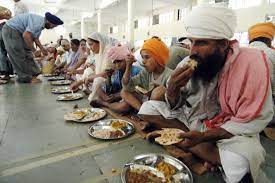
- 14 Feb 2025
In News:
Launched in August 2018 by the Ministry of Culture, the SevaBhoj Yojana is a Central Sector Scheme aimed at supporting charitable and religious institutions that provide free food (langar, prasad, bhandara) to the public without discrimination.
Key Highlights:
- The scheme provides reimbursement of the Central Government’s share of Central Goods and Services Tax (CGST) and Integrated Goods and Services Tax (IGST) paid on the purchase of specific raw food items used in preparing meals.
- Objectives of the Scheme
- Reduce the financial burden on charitable/religious institutions engaged in feeding the public.
- Encourage the tradition of community kitchens and public service across diverse religious institutions.
- Promote inclusive religious philanthropy while ensuring transparency and accountability in public spending.
Key Features
Feature Details
Launched By Ministry of Culture, Government of India
Year of Launch August 2018
Target Beneficiaries Temples, Gurudwaras, Mosques, Churches, Ashrams, Monasteries, etc.
Reimbursed Taxes CGST and Central Share of IGST
Scope of Benefit Raw food items used for free food distribution
Coverage Threshold Institutions must serve free food to at least 5000 people/month
Required Duration of Operation Minimum 3 years of continuous food service
Eligibility Criteria
To qualify for the scheme, institutions must:
- Serve free food to a minimum of 5,000 people per month.
- Be in operation for at least three years prior to application.
- Be registered under:
- Section 10 or 12AA of the Income Tax Act, or
- Societies Registration Act, or
- Relevant public trust laws, or
- Statutory religious bodies constituted under law.
- Possess a District Magistrate’s certificate confirming their ongoing food distribution service.
Implementation Mechanism
The scheme ensures transparency and streamlined reimbursement through a digital and multi-tier process:
- Institutions register on the NGO Darpan Portal of NITI Aayog.
- Apply through the Central Sector Monitoring System (CSMS) Portal of the Ministry of Culture.
- Submit relevant documents to the Nodal Central Tax Officer in their State/UT.
- On verification, a Unique Identity Number (UIN) is issued.
- Verified tax claims are forwarded by the concerned GST Authority to the Ministry.
- The Ministry releases the sanctioned amount to the GST Authority, which reimburses the institution.
Governance and Outreach
- The Ministry promotes the scheme through official websites and social media platforms.
- Efforts are made to ensure equitable representation of all religions and communities.
- As of January 2025, several institutions across states have benefited from the scheme, though individual beneficiary counts are not collected.
S?janam
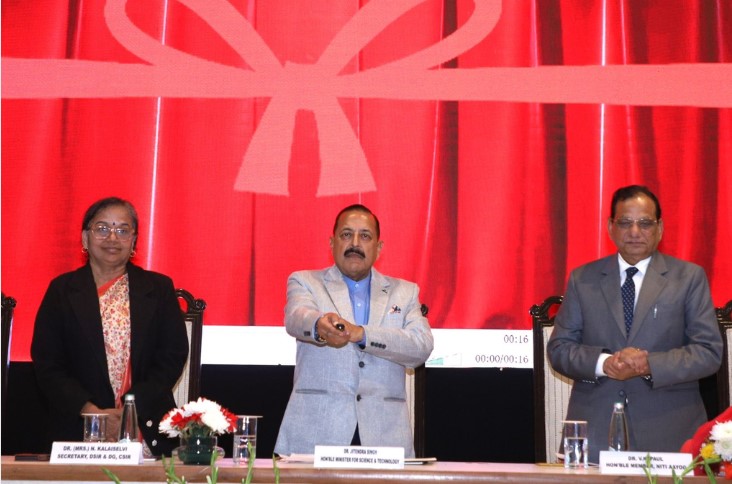
- 14 Feb 2025
In News:
In a significant stride toward sustainable healthcare and waste management, India launched its first indigenous Automated Biomedical Waste Treatment Plant, named S?janam, on April 13, 2025, at AIIMS, New Delhi.
Developed by the CSIR-National Institute for Interdisciplinary Science and Technology (CSIR-NIIST), Thiruvananthapuram, under the Ministry of Science & Technology, this innovative rig marks a paradigm shift in handling biomedical waste, moving away from conventional, polluting incineration techniques.
Why this matter?
India generates approximately 743 tonnes of biomedical waste daily (CPCB, 2023). Safe disposal has been a persistent challenge due to limited infrastructure, high costs, and environmental concerns. The launch of S?janam aligns with the government’s push for “Waste to Wealth” and environmentally responsible healthcare infrastructure, as part of the Atmanirbhar Bharat and Swachh Bharat initiatives.
What is S?janam?
- An automated, eco-friendly biomedical waste treatment rig.
- Designed to disinfect pathogenic waste like blood, urine, sputum, and lab disposables.
- Does not use incinerators, which release toxic emissions such as dioxins and furans.
Key Features & Capacity
Feature Details
Disinfection Process Non-incineration, antimicrobial treatment
Daily Treatment Capacity 400 kg of total biomedical waste
Organic Waste Handling Initially handles 10 kg/day of degradable medical waste
Environmental Safety Neutralizes foul odor; releases pleasant fragrance
Health Safety Minimizes human exposure and risk of contamination
Validation Third-party tested; treated material safer than organic vermicompost
Significance for Public Health and Environment
- Reduces dependency on expensive, energy-intensive incinerators.
- Eco-friendly solution that prevents toxic emissions and groundwater contamination.
- Aligns with Bio-Medical Waste Management Rules, 2016, which mandate safe segregation, treatment, and disposal.
- Enhances India’s capability to respond to health crises (e.g., pandemics), where waste generation spikes.
Strategic Implications
- Promotes indigenous technological innovation under “Make in India.”
- Offers a scalable solution for both urban and rural healthcare setups.
- Contributes to India’s climate commitments by cutting healthcare-related emissions.
Henipavirus
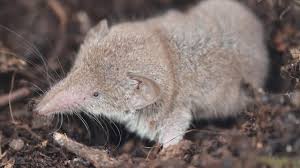
- 05 Feb 2025
In News:
A henipavirus, specifically the Camp Hill virus, has been detected in North America for the first time. This discovery in northern short-tailed shrews—a small mammal species found commonly in Canada and the U.S.—raises concerns over a potential zoonotic disease outbreak.
About Henipavirus
- Virus Type: Henipaviruses are zoonotic, negative-sense RNA viruses.
- Family: Paramyxoviridae.
- Natural Hosts: Pteropid fruit bats (commonly known as flying foxes).
- Other Hosts: Capable of infecting various mammals, including humans, horses, pigs, and shrews.
Notable Henipaviruses:
- Hendra virus (HeV):
- First identified in Australia.
- Mortality rate: Up to 70%.
- Nipah virus (NiV):
- Found in Southeast Asia, including Malaysia and Bangladesh.
- Case fatality rate ranges from 40% to 75%, depending on surveillance and clinical care.
Symptoms and Disease Progression
- Initial symptoms: Fever, dizziness, headache, and muscle pain (myalgias).
- Advanced symptoms: Respiratory issues, encephalitis (brain inflammation), confusion, abnormal reflexes, seizures, and coma.
- Relapsing encephalitis may occur months or years after apparent recovery.
- Fatality Risk: High, primarily due to encephalitis and multi-organ failure caused by damage to small blood vessels (microinfarction) in organs like the brain, liver, and kidney.
Why are Henipaviruses so dangerous?
- Henipaviruses produce proteins that:
- Suppress the innate immune system.
- Block interferon-stimulated antiviral responses, aiding viral replication.
- Act as virulence factors, allowing widespread infection and severe outcomes.
Modes of Transmission
- Animal-to-human:
- Direct contact with infected animals (e.g., fruit bats, pigs, horses, shrews).
- Consumption of contaminated food or water (e.g., raw date palm sap in Nipah outbreaks).
- Human-to-human: Via bodily fluids, close contact, or respiratory droplets during caregiving.
Treatment and Prevention
- Treatment:
- No specific vaccine or antiviral currently exists.
- Management is symptomatic and supportive (respiratory support, ICU care).
- Prevention:
- Vaccination of horses (in HeV-risk regions like Australia).
- Avoiding contact with fruit bats and sick animals.
- Isolating infected individuals and animals to prevent spread.
India adds 4 new Ramsar Sites
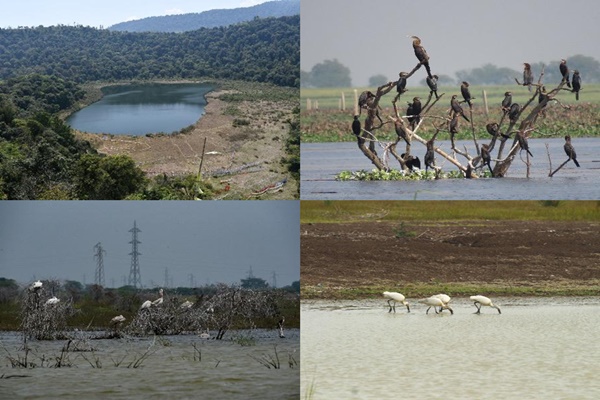
- 01 Feb 2025
In News:
The Government of India has added four new Ramsar sites, increasing the total to 89, the highest in Asia and third globally. The newly designated wetlands include:
- Sakkarakottai Bird Sanctuary (Tamil Nadu)
- Therthangal Bird Sanctuary (Tamil Nadu)
- Khecheopalri Wetland (Sikkim)
- Udhwa Lake (Jharkhand)
This marks a significant milestone as Sikkim and Jharkhand have received their first Ramsar recognitions, while Tamil Nadu strengthens its lead with 20 Ramsar sites, the most among Indian states.
About the Ramsar Convention
- Adopted: 1971 in Ramsar, Iran
- Objective: Conservation and wise use of wetlands through local, national, and international cooperation.
- World Wetlands Day: Celebrated on 2nd February to promote awareness.
Key Highlights:
Therthangal Bird Sanctuary – Tamil Nadu
- Notified in 2010; covers 29.29 ha.
- Crucial breeding and foraging site for waterbirds like Spot-billed Pelican, Black-headed Ibis, and Oriental Darter.
- Aids groundwater recharge and climate regulation.
- Part of the Central Asian Flyway.
Sakkarakottai Bird Sanctuary – Tamil Nadu
- Notified in 2012; spans 230.49 ha.
- Located near Gulf of Mannar; significant stopover for migratory birds.
- Hosts endemic species and near-threatened fauna like Lion-tailed Macaque and Giant Squirrel.
Khecheopalri Wetland – Sikkim
- Sacred lake revered by Buddhists and Hindus; called Sho Dzo Sho locally.
- Known as a wish-fulfilling lake.
- Birds prevent leaves from settling on the surface.
- Rich in avifauna: fishing eagles, Brahminy kites.
- Integral to ecotourism and biodiversity conservation.
Udhwa Lake – Jharkhand
- Comprises Pataura Jheel (155 ha) and Brahma Jamalpur Jheel (410 ha).
- First Ramsar site of Jharkhand; near Ganga River.
- Declared a bird sanctuary in 1991; attracts migratory birds from September onwards.
Falls under the Gangetic Plains biogeographic zone.
RBI Payment System Report 2024
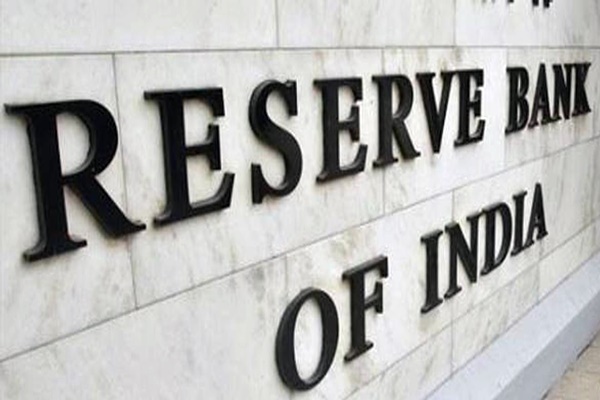
- 29 Jan 2025
In News:
The Payment System Report – December 2024 is a bi-annual publication by the Reserve Bank of India (RBI).
It analyses trends in digital and retail payment systems over the last five calendar years (up to CY-2024) and highlights India's transformation into a global leader in payment innovation and inclusion.
Growth in Digital Transactions
- Exponential Growth: Digital payment transactions rose 94 times in volume (from 222 crore in 2013 to 20,787 crore in 2024) and 3.5 times in value (from ?772 lakh crore to ?2,758 lakh crore).
- Recent CAGR (2019–2024):
- Volume: 45.9% CAGR
- Value: 10.2% CAGR
- Retail Digital Payments: From 162 crore transactions in FY13 to 16,416 crore in FY24 — a 100-fold increase in 12 years.
- Digital Payments Index (DPI): Surged from a base of 100 in March 2018 to 445.50 in March 2024, indicating massive digital adoption.
UPI: A Game-Changer
- Launched in 2016 by NPCI, UPI has revolutionized mobile-based payments.
- CAGR (Last 5 Years):
- Volume: 74.03%
- Value: 68.14%
- Monthly Transactions: UPI processes over 16 billion transactions monthly, ranking among the largest globally.
- Inclusive Innovations:
- UPI Lite & UPI Lite X: For offline/small-value payments.
- UPI123Pay: For feature phone users.
- UPI 2.0: Includes auto-debit and recurring payment functionalities.
Credit and Debit Card Trends
- Credit Cards:
- Growth: More than doubled from 5.53 crore (Dec 2019) to 10.80 crore (Dec 2024).
- Debit Cards:
- Stable Usage: Marginal increase from 80.53 crore to 99.09 crore in the same period.
Cross-Border Payment Integration
- RBI is actively enhancing cross-border payments by integrating India's UPI with international Fast Payment Systems (FPSs), addressing high costs, delays, and limited access.
- Key Developments:
- UPI-PayNow Linkage (Feb 2023): India-Singapore real-time cross-border payments.
- UPI-enabled QR Payments: Available in Bhutan, France, Mauritius, Nepal, Singapore, Sri Lanka, UAE.
- Project Nexus:
- A BIS-conceptualized multilateral project.
- Aims to interlink FPSs of India, Malaysia, Philippines, Singapore, and Thailand for seamless retail payments.
Institutional and Legal Framework
- Legal Backbone: Payments and Settlement Systems Act, 2007 (PSS Act) empowers RBI to:
- Regulate, supervise, and license payment system operators.
- Authorize systems like NPCI, card networks, ATM operators, etc.
- Governing Body:
- Board for Regulation and Supervision of Payment and Settlement Systems (BPSS) under RBI.
- Chairperson: RBI Governor; Vice-Chairperson: Deputy Governor (in charge of DPSS).
- Payment Ecosystem Entities:
- RBI-regulated: RTGS, NEFT, Cheques (CTS).
- NPCI-managed: UPI, IMPS, AePS, BBPS, NETC, NACH, Cards.
- Other PSOs: TReDS, PPIs.
Strategic Significance
- Financial Inclusion: Payment systems are critical tools for promoting inclusive growth by ensuring last-mile delivery of services and direct benefit transfers.
- Global Competitiveness: RBI’s regulatory foresight and innovation have placed India among the global frontrunners in digital payments.
Unified Pension Scheme (UPS)
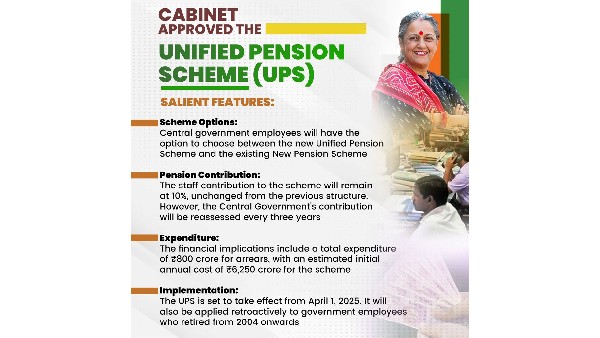
- 27 Jan 2025
In News:
The Ministry of Finance has notified the Unified Pension Scheme (UPS) as an option under the National Pension System (NPS) for Central Government employees, effective April 1, 2025. This reform addresses long-standing concerns about the unpredictability of pension returns under the NPS.
Key Highlights:
- Applicability: Applies to Central Government employees currently under the NPS, including those recruited on or after January 1, 2004, who opt for the UPS.
- Objective: To provide guaranteed post-retirement financial security, addressing grievances regarding the market-linked returns of the NPS.
- Regulatory Framework: The scheme will be regulated by the Pension Fund Regulatory and Development Authority (PFRDA), which will issue detailed operational guidelines.
Pension and Benefit Structure
- Guaranteed Monthly Pension:
- 50% of the average basic pay drawn in the last 12 months prior to retirement.
- Requires completion of 25 years of service.
- Those with 10–25 years of service will receive a proportionate pension.
- Dearness Relief (DR): Periodic adjustments based on inflation trends to maintain pension value.
- Family Pension: In case of death, 60% of the employee's pension will be paid to eligible family members.
- Minimum Pension: Assured ?10,000 per month for those completing at least 10 years of service.
- Superannuation Benefits: Includes a lump sum payout and gratuity at retirement.
Contribution Mechanism
- Employee Contribution: 10% of basic pay.
- Government Contribution: 5% of basic pay (subject to revision based on actuarial evaluations).
Background and Policy Evolution
- The Union Cabinet approved the UPS on August 24, 2024, benefiting nearly 2.3 million Central Government employees.
- The move followed demands from staff unions for guaranteed pensions, and political pressure after several states reverted to the Old Pension Scheme (OPS).
- A high-level committee, led by T.V. Somanathan (then Finance Secretary), was formed in April 2023 to review the NPS framework and design an equitable alternative.
India’s Deep Ocean Mission
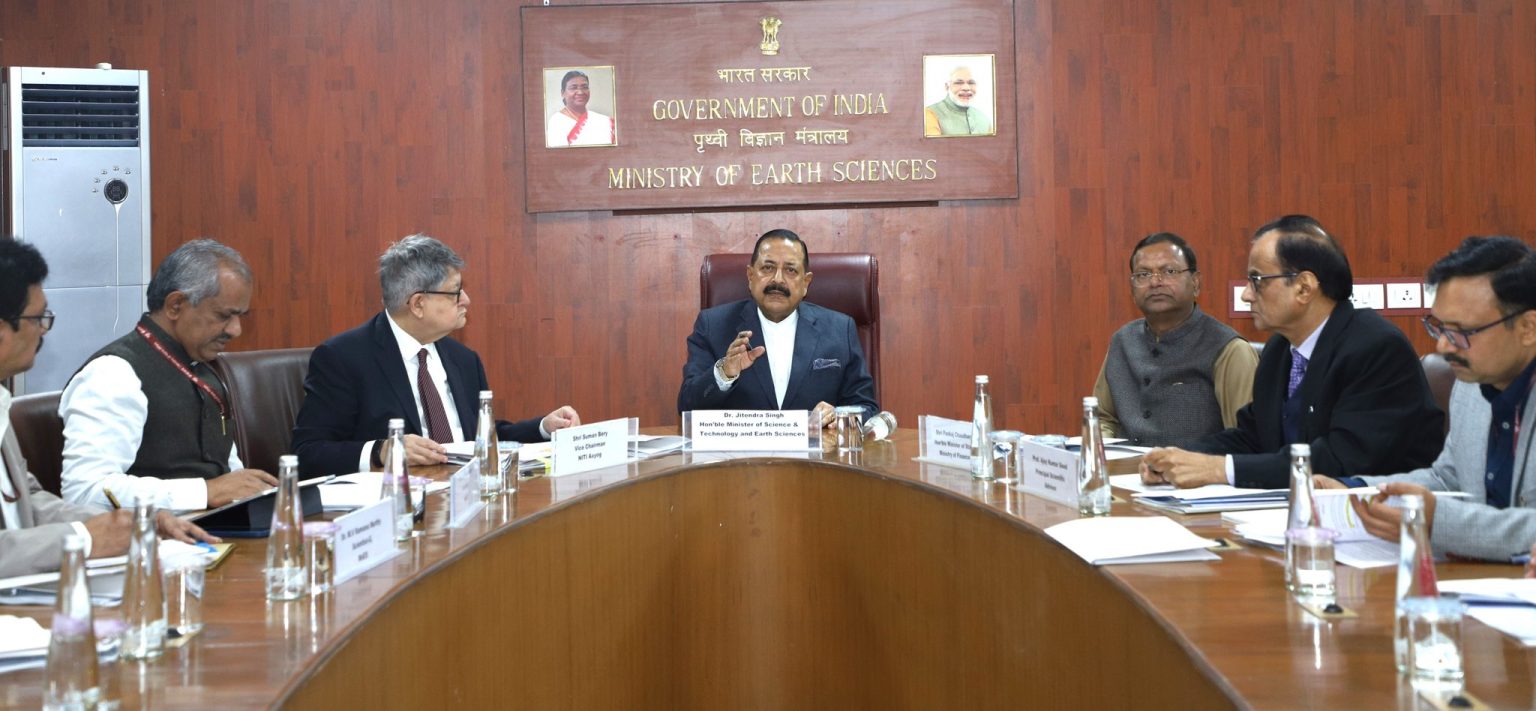
- 24 Jan 2025
In News:
India is set to deploy its first human-operated deep-sea submersible as part of the Deep Ocean Mission (DOM), marking a significant leap in the country’s marine research and technological capability.
Key Highlights:
- Submersible Deployment (2024):
- India will operate its first human submersible at a depth of 500 meters this year.
- The goal is to reach a depth of 6,000 meters by 2025.
- The project aligns with the timelines of Gaganyaan, India’s first human space mission—showcasing parallel progress in marine and space technology.
- Indigenous Technology:
- The mission is powered by 100% indigenous technology, underlining India’s growing self-reliance in high-end scientific infrastructure.
About Deep Ocean Mission (DOM):
- Launched: 2021
- Nodal Ministry: Ministry of Earth Sciences (MoES)
- Budget: ?4,077 crore over five years
- Framework: One of nine key missions under PM-STIAC (Prime Minister’s Science, Technology, and Innovation Advisory Council)
Core Objectives:
- Develop deep-sea technologies, including a manned submersible for ocean exploration.
- Explore and harness ocean resources such as: Polymetallic nodules, Hydrothermal sulphides & Rare earth metals
- Study marine biodiversity for sustainable fisheries and conservation.
- Support India’s blue economy through innovation and research.
- Monitor ocean climate change and develop advisory services.
- Promote marine biology and biotechnology via dedicated marine research stations.
- Harvest renewable energy and freshwater from ocean sources.
Key Components and Technologies:
Matsya6000 Submersible:
- India’s first manned deep-sea vehicle.
- Designed to reach 6,000 meters depth.
- Crew Capacity: Three members
- Developed by: National Institute of Ocean Technology (NIOT), Chennai
- Structure: Made of titanium alloy, withstanding 6,000 bar pressure
- Equipped with: Scientific sensors, tools for sampling, viewports, propellers, and acoustic communication systems.
- Combines capabilities of ROVs (Remotely Operated Vehicles) and AUVs (Autonomous Underwater Vehicles).
Varaha Deep-Ocean Mining System:
- Developed by NIOT
- Successfully conducted trials at 5,270 meters
- Key to India’s future in deep-sea mining of critical minerals
Strategic Importance:
- Scientific Advancement: DOM places India among a select group of nations (USA, Russia, China, France, Japan) with human-crewed deep-ocean exploration capacity.
- Economic Potential: Unlocks access to underwater mineral wealth, critical for electronics, defense, and energy sectors.
- Environmental Sustainability: Supports marine biodiversity conservation and promotes sustainable use of oceanic resources.
- Geopolitical Significance: Enhances India’s presence and influence in the Indian Ocean Region (IOR).
- Technological Leap: Strengthens India’s capabilities in underwater robotics, materials engineering, and ocean sciences.
One Nation, One Legislative Platform
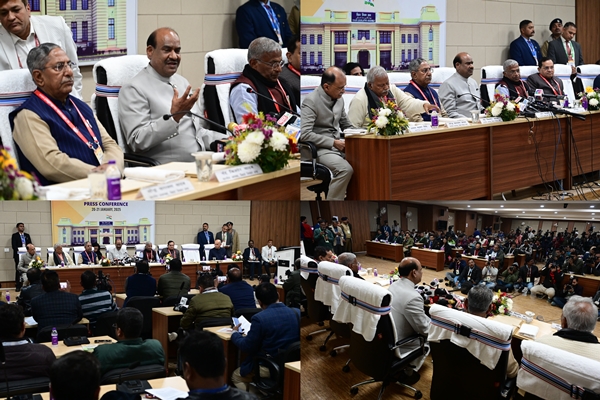
- 22 Jan 2025
In News:
- The 85th AIPOC, held in Patna, Bihar, emphasized enhancing the effectiveness of legislative institutions through reforms in decorum, digitization, and public participation.
- A major outcome was the announcement of the One Nation, One Legislative Platform to digitally integrate legislative bodies across India.
All India Presiding Officers’ Conference (AIPOC):
- Established: 1921; first session held in Shimla.
- Role: Apex platform bringing together Presiding Officers of Parliament and State Legislatures.
- Objective: Strengthen democratic institutions by fostering cooperative federalism, legislative accountability, and improved law-making processes.
2025 Conference Highlights:
- Venue: Historic Bihar Legislature Premises, Patna.
- Key Themes:
- Reducing disruptions and maintaining decorum in legislative houses.
- Promoting qualitative debate and discussion.
- Observing the 75th year of the Constitution with participatory democratic celebrations.
- Resolutions Adopted:
- Formulation of internal code of conduct by political parties.
- Nationwide campaigns involving PRIs, urban bodies, students, NGOs, media, and more to celebrate democratic values.
One Nation, One Legislative Platform (ONOLP):
What It Is:
A national mission to create a unified digital ecosystem integrating the Parliament, state legislatures, and local bodies for better legislative coordination and public access.
Key Objectives:
- Real-Time Data Sharing: Seamless, up-to-date legislative information across institutions—proceedings, bills, debates, etc.
- Transparency & Accountability: Open access to deliberations enables citizen oversight and institutional accountability.
- Public Participation: User-friendly access encourages civic engagement in law-making and governance.
- AI & Tech Integration: Use of Artificial Intelligence for data analysis, decision support, and enhanced efficiency.
- Paperless Legislatures: Digitization of records to promote sustainability and reduce bureaucratic delays.
Implementation Support:
- Spearheaded by the Lok Sabha, with Speaker Om Birla announcing its completion by 2025.
- Includes the creation of a central portal for public and institutional use.
India-Malaysia Cooperation in Critical Minerals and Rare Earth Elements
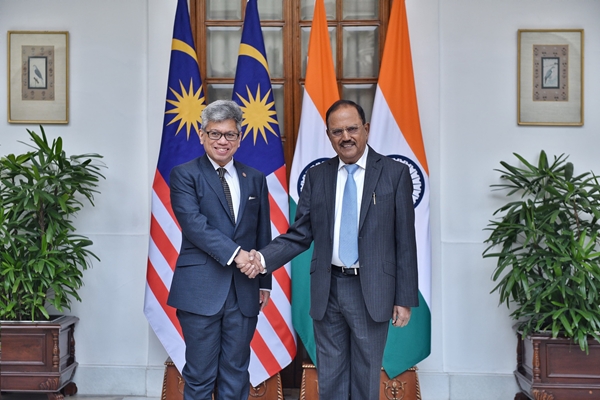
- 08 Jan 2025
In News:
- On January 7, 2025, during the inaugural India-Malaysia Security Dialogue in New Delhi, both countries agreed to enhance cooperation in critical minerals and rare earth elements (REEs).
- The meeting was co-chaired by India's National Security Adviser, Ajit Doval, and Malaysia’s Director General of the National Security Council, Raja Dato Nushirwan Bin Zainal Abidin.
- The agreement follows the upgrade of bilateral relations to a Comprehensive Strategic Partnership during Malaysian Prime Minister Anwar Ibrahim’s visit to India in August 2024.
- The dialogue also focused on other security aspects such as counter-terrorism, cyber security, and maritime security.
Importance of Critical Minerals and REEs:
-
- Critical Minerals: These are essential for a variety of industries like IT, energy, and defense. They are integral to manufacturing electric vehicle batteries, solar cells, and advanced electronics.
-
- Rare Earth Elements (REEs): Used in high-tech applications such as wind turbines, electric vehicle engines, and high-powered magnets. While their extraction is not rare, it is technically difficult due to their complex nature.
Strategic Relevance:
-
- Global Demand: The global demand for critical minerals is rising, and both countries see it as a strategic necessity to ensure a stable supply of these materials.
- Malaysia's Resources: Malaysia possesses significant deposits of non-rare radioactive earth ores, including essential REEs like Neodymium (Nd), Dysprosium (Dy), and Praseodymium (Pr). These elements are crucial in today’s technological innovations.
- India’s Dependence on Imports: India, which currently imports a substantial portion of its critical minerals, aims to diversify its supply chain by collaborating with Malaysia.
Sustainability and Ecological Accountability:
-
- Both countries recognize the environmental challenges of mining these critical resources. Malaysia aims to adopt responsible mining practices that minimize ecological harm.
- India seeks to ensure a supply chain that aligns with sustainable development goals, balancing economic needs with environmental responsibilities.
Enhancing Supply Chain Resilience:
-
- Diversification of Supply Chain: This partnership aims to reduce India’s dependency on a limited number of countries for critical minerals, enhancing resilience against global supply chain disruptions.
- Collaboration in Extraction and Processing: Both nations are exploring joint ventures in the exploration, extraction, and processing of critical minerals to boost their technological and economic standing globally.
Future Prospects:
-
- The institutionalization of this dialogue through annual meetings is expected to strengthen bilateral cooperation in the critical minerals sector.
- Increased cooperation is likely to enhance economic growth for both countries, aligning them strategically in the global minerals market as demand for these resources continues to soar.
Broader Security Cooperation:
-
- Beyond critical minerals, the India-Malaysia Security Dialogue explored enhanced collaboration in areas like counter-terrorism, cyber security, maritime security, and defense industries.
- This broadening of security cooperation complements the strategic minerals partnership, further solidifying the bilateral ties between the two nations.
Project VISTAAR

- 04 Jan 2025
In News:
IIT Madras has partnered with the Ministry of Agriculture and Farmers’ Welfare on Project VISTAAR (Virtually Integrated System to Access Agricultural Resources). MoU signed between the Ministry and IIT Madras to integrate information about agricultural start-ups into the VISTAAR platform.
Key Highlights:
Project Objectives:
- Digitalisation of Agricultural Extension: To enhance the efficiency and effectiveness of the agricultural extension system through digital platforms.
- Access to Start-Up Innovations: Provide farmers easy access to over 12,000 start-ups in agriculture and allied sectors, connecting them to technological solutions and innovations.
- Support for Sustainable Agriculture: Focus on making farming more sustainable and climate-resilient by promoting adoption of innovative technologies.
Key Features of VISTAAR:
- Integration of start-up data via IIT Madras' startup information platform and its incubatee, YNOS Venture Engine.
- Advisory services covering:
- Crop production
- Marketing
- Value addition
- Supply chain management
- Information on government schemes for agriculture, allied sectors, and rural development.
- Real-time, contextual, and accurate information to enhance decision-making and improve farming practices.
Significance of the Project:
- The platform will expand the outreach of agricultural extension services, providing support to farmers across India.
- It will ensure farmers access high-quality advisory services that are critical for improving productivity and income.
- Integration of start-up-driven innovations will aid in the adoption of climate-resilient farming practices.
- Timely and accurate information will empower farmers to make informed decisions and improve the efficiency of agricultural processes.
Impact on Farmers:
- Digitalisation will provide farmers with easier access to expert advice and resources, enhancing productivity.
- Improved access to government schemes ensures farmers can avail themselves of financial and technical support for development.
- The project aligns with national objectives of enhancing agriculture’s contribution to India’s economy and ensuring food security.
Chinar Boat Race 2024
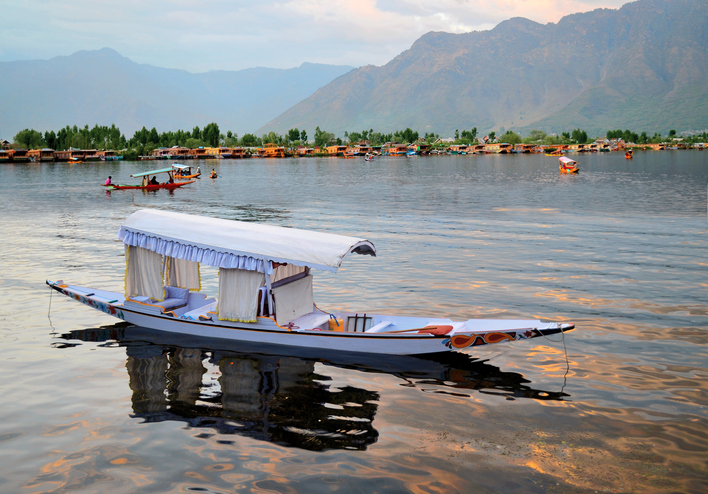
- 24 Nov 2024
In News:
- The Chinar Boat Race 2024 was successfully organized in Dal Lake, Srinagar, Jammu and Kashmir.
Key Highlights:
- Organizers:The event was hosted by the Indian Army in collaboration with White Globe NGO and the Lake Conservation and Management Authority (LCMA).
- Purpose:The race aimed to celebrate Kashmir’s culture and traditions while promoting conservation of Dal Lake.The event emphasized the ecological importance of Dal Lake and the need for its protection.
- Cultural Impact:The race attracted a large crowd of both locals and tourists, highlighting the vibrant culture of Kashmir.The event fostered a sense of community and unity, with people cheering for the participants.
- Military Engagement:The Army organizes sports and cultural events in the region to strengthen Army-public relationships, engage local youth, and promote an honourable profession in the military.
Dal Lake Overview:
- Location: Situated in Srinagar, Jammu and Kashmir, surrounded by the PirPanjal mountains.
- Area: 18 sq. km (lake); part of a 21.1 sq. km wetland.
- Islands: Includes 3 islands, two marked by Chinar trees: Roph Lank (Silver Island) and Sone Lank (Gold Island).
- Significance: Known as the “Jewel in the crown of Kashmir” or “Srinagar’s Jewel”.
- Floating Market: Famous for its floating market where vendors use wooden boats (Shikaras) to sell goods.
- Temperature: Can drop to −11°C in winter, sometimes freezing the lake.
11th ASEAN Defence Ministers’ Meeting-Plus (ADMM-Plus)

- 23 Nov 2024
In News:
The 11th ADMM-Plus held in Vientiane, Laos saw Union Defence Minister Rajnath Singh engage in discussions with his counterparts from the United States, Japan, and the Philippines.
Focus: The talks centered on strengthening defence partnerships, regional security, and enhancing cooperation among Indo-Pacific nations.
ASEAN Defence Ministers’ Meeting-Plus (ADMM-Plus):
- Platform for Dialogue: The ADMM-Plus is a key platform for ASEAN and its eight Dialogue Partners—Australia, China, India, Japan, New Zealand, Republic of Korea, Russia, and the United States.
- Establishment: The inaugural ADMM-Plus was held in HàN?i, Vietnam on 12 October 2010.
- Annual Meetings: Since 2017, the ADMM-Plus has met annually to enhance dialogue and cooperation amidst an increasingly complex regional security environment.
Objectives:
- Capacity Building: To aid ASEAN members in addressing shared security challenges.
- Promote Trust and Transparency: Enhance mutual trust and confidence between ASEAN and partner nations.
- Regional Peace and Stability: Focus on cooperation in defence and security to counter transnational security challenges.
- ASEAN Security Community: Contribute to realizing the ASEAN Security Community, as per the Bali Concord II, aiming for peace, stability, democracy, and prosperity in the region.
- Vientiane Action Programme: Facilitate ASEAN's efforts towards a peaceful, secure, and prosperous ASEAN with outward-looking relations with Dialogue Partners.
India’s First AI Data Bank

- 22 Nov 2024
In News:
The Ministry of Science and Technologyrecently launched India’s first Artificial Intelligence (AI) data bank that is aimed at propelling innovation and boosting the country’s national securityat the 7th Edition of the ASSOCHAM AI Leadership Meet 2024.
-
- The event theme: “AI for India: Advancing India’s AI Development – Innovation, Ethics, and Governance”.
Key Highlights:
- Objective:
- Propel innovation and enhance national security.
- Provide access to diverse, high-quality datasets for creating scalable and inclusive AI solutions.
- Key Features of the AI Data Bank:
- Target Audience: Researchers, startups, and developers.
- Data Types: Satellite, drone, and IoT data.
- Purpose:
- To enhance national security through real-time analytics.
- Enable predictive analytics for disaster management and cybersecurity.
Strategic Importance of AI in India:
- National Security: AI to strengthen national security by providing real-time analytics from satellite, drone, and IoT data.
- AI for Development:
- AI’s role in reshaping sectors like governance, business, healthcare, education, and space exploration.
- AI as a tool for economic growth, addressing climate change, improving public service delivery, and ensuring national security.
- Ethics and Governance:
- Ensuring responsible AI use with optimal handling.
- Addressing algorithmic bias and data privacy through robust governance frameworks.
- Commitment to transparent and fair AI systems that empower people rather than replace them.
- AI in Disaster Management and Cybersecurity:
- Aligning with India’s goals to use AI for predictive analytics in disaster management.
- Enhancing cybersecurity through AI technologies.
Government’s Vision on AI:
- Empowering Citizens: AI must bridge divides and ensure equitable access to its benefits.
- AI as Backbone for Future Development: India’s focus on making AI an integral part of its future economic and technological growth.
Exercise PoorviPrahar

- 17 Nov 2024
In News:
- From November 10 to 18, 2024, the Indian Army is conducting a high-intensity tri-services exercise named PoorviPrahar in the forward areas of Arunachal Pradesh.
- The exercise aims to enhance the combat effectiveness and coordination between the Indian Army, Navy, and Air Force, focusing on integrated joint operations in the challenging mountainous terrain of the region.
About Exercise PoorviPrahar
Objective: The primary goal of Exercise PoorviPrahar is to hone the combat readiness and synergy across the three branches of the Indian Armed Forces. It is designed to improve their ability to conduct integrated joint operations, especially in the difficult terrain of Arunachal Pradesh, which is crucial due to the region's strategic location along India's eastern frontier.
Key Features of the Exercise:
- Multidomain Integration:The exercise involves land, air, and sea operations, demonstrating India's capability to conduct multi-domain operations. This showcases the Indian Armed Forces' preparedness to tackle threats across all three domains simultaneously.
- Advanced Military Platforms:
- Aircraft: Advanced fighter jets, reconnaissance aircraft.
- Helicopters: Including Chinook heavy-lift helicopters and Advanced Light Helicopters (ALH Rudra).
- Artillery: The exercise makes use of the M777 Ultra-Light Howitzers, which provide mobility and precision firepower in rugged terrains.
- Swarm Drones and Loitering Munitions: These cutting-edge technologies enable precision strikes and enhanced situational awareness, contributing to more flexible and adaptive operations.
- Technological Integration:
- The exercise integrates next-generation technologies like Swarm Drones, Loitering Munitions, and First-Person View (FPV) Drones. These tools enhance operational flexibility, improve situational awareness, and enable precision in strike capabilities, marking a significant advancement in India's military technology.
- Operational Coordination:A core component of the exercise is the development of a Common Operating Picture (COP). This system integrates real-time data from land, air, and sea operations, improving coordination and decision-making. The system relies on AI-driven analytics and satellite communications, enabling rapid information sharing and quicker response times.
- Tactical Focus on Mountain Warfare:Arunachal Pradesh, with its mountainous and rugged terrain, is the perfect setting for honing skills required for mountain warfare. The region’s proximity to India’s border with China makes it a critical area for India’s defense strategy.
Key Takeaways:
- Integrated Joint Operations: The exercise focuses on improving the coordination between the Army, Navy, and Air Force to execute seamless operations across land, air, and sea.
- Advanced Technology Integration: The exercise features the use of Swarm Drones, Loitering Munitions, and AI-driven systems to enhance precision, situational awareness, and overall operational flexibility.
- Mountain Warfare Expertise: Conducted in the mountainous terrain of Arunachal Pradesh, the exercise is crucial for preparing the Indian Armed Forces to operate effectively in such challenging landscapes.
- Strategic Posture: The exercise reaffirms India’s ability to defend its Eastern frontier and maintain a robust defense posture in the face of potential threats in the region.
Greening India's Wastelands with Agroforestry (GROW) Report and Portal (DD News)

- 13 Feb 2024
Why is it in the News?
NITI Aayog recently unveiled the Greening and Restoration of Wasteland with Agroforestry (GROW) report and portal, aiming to bolster efforts in environmental conservation and sustainable land use across India.
About the Greening India's Wastelands with Agroforestry (GROW) Portal:
- The "Greening and Restoration of Wasteland with Agroforestry (GROW)-Suitability Mapping" portal offers universal access to state and district-level data.
- Hosted on the Bhuvan website, the GROW initiative aligns with national commitments to restore 26 million hectares of degraded land by 2030 and create an additional carbon sink of 2.5 to 3 billion tonnes of carbon dioxide equivalent.
- Led by NITI Aayog, the initiative involved collaboration from various institutions and utilized advanced technologies like remote sensing and GIS to assess agroforestry suitability across all Indian districts.
- Through thematic datasets, the project developed an Agroforestry Suitability Index (ASI) for national-level prioritization of greening and restoration projects.
- Based on analysis of five remote sensing-derived thematic layers - land use, wasteland, slope, water proximity, and soil organic content - the system provides information on areas suitable for agroforestry across India.
- It classifies areas as highly suitable, moderately suitable, and less suitable for agroforestry.
- Key features include generating district-level information on wasteland areas suitable for agroforestry, area prioritization regimes, live maps, area analysis-statistic reports, and an interactive mode/tool for flexibility in handling weights based on local conditions/needs.
Government Emphasis on Agroforestry in Budget Allocation:
- The Union Budget for the fiscal year 2022-23 has underscored the promotion of agroforestry and private forestry as a priority.
- Recognizing the critical goods and services provided by agroforestry, the budget aligns with the country's commitment to sustainable land use practices.
India's Agroforestry Leadership and Global Alignments:
- As the seventh-largest country globally, India faces challenges such as increased build-up areas, degraded land, and imbalanced resources.
- Approximately 16.96% of the Total Geographical Area (TGA) is a wasteland, necessitating transformation for productive use.
- India's pioneering National Agroforestry Policy, initiated in 2014, aims to enhance productivity, profitability, and sustainability through agroecological land use systems.
- Agroforestry aligns with global commitments, including the Paris Agreement, Bonn Challenge, UN Sustainable Development Goals, United Nations Convention on Combating Desertification (UNCCD), Doubling Farmers Income, Green India Mission, and more.
- India's proactive stance in promoting agroforestry contributes significantly to these international efforts, fostering a sustainable and resilient future.
‘Global Good Alliance for Gender Equity and Equality’ launched at Davos with support from India (DD)

- 20 Jan 2024
Why is it in the News?
Recently, India announced a new alliance for global good, gender equity, and equality at the World Economic Forum Annual Meeting.
About Global Alliance for Global Good- Gender Equity and Equality:
- It primary aims to unite global best practices, promote knowledge-sharing, and invest in women's health, education, and enterprise.
- It follows the initiatives of the G20 framework, including the Business 20, Women 20, and G20 EMPOWER, building on the commitments of G20 leaders for the global community's benefit.
- Aligned with multiple Sustainable Development Goals (SDGs), such as Good Health and Well-Being (SDG 3), Quality Education (SDG 4), Gender Equality and Empowerment (SDG 5), and Global Partnership for Development (SDG 17), this initiative underscores India's dedication to gender equality in global development.
- Supported by the Bill and Melinda Gates Foundation, anchored by the CII Centre for Women Leadership, and with partnerships from the World Economic Forum and Invest India, the alliance reflects India's commitment to addressing gender-related issues within G20 nations under the principles of 'Vasudhaiva Kutumbakam' and 'Sabka Saath, Sabka Prayaas.'
About the World Economic Forum:
- The World Economic Forum is the International Organization for Public-Private Cooperation.
- The Forum engages the foremost political, business, cultural and other leaders of society to shape global, regional and industry agendas.
- It was established in 1971 by German engineer and economist Klaus Schwab.
- It is a not-for-profit foundation and is headquartered in Geneva, Switzerland.
- The Forum strives in all its efforts to demonstrate entrepreneurship in the global public interest while upholding the highest standards of governance.
Reports released by WEF:
-
- Global Gender Gap Index
- Global Risks Report
- Fostering Effective Energy Transition Report
- Global Cyber Security Outlook
- Global Competitiveness Report
- Travel and Tourism Development Index
AstroSat detects millisecond X-ray bursts from high magnetic field neutron stars (DD News)

- 26 Dec 2023
Why is it in the News?
India’s first multi-wavelength space-based observatory, AstroSat, has detected intense sub-second X-ray bursts emanating from a neutron star with an ultrahigh magnetic field, known as a magnetar.
What is X-ray Bursts?
- X-ray bursts manifest in low-mass X-ray binary systems featuring a neutron star and a low-mass main sequence star orbiting each other.
- The occurrence of these bursts is intricately linked to the gravitational dynamics of the neutron star and its companion.
- In this system, the proximity and intense gravitational forces of the neutron star cause the companion star to exceed its Roche-lobe, leading to the formation of an accretion disk around the neutron star.
- This disk becomes a repository for hydrogen drawn from the overflowing companion star.
- As hydrogen accumulates on the neutron star's surface, the extreme temperatures and pressures prevailing there catalyze its transformation into helium.
- This ongoing process results in the formation of a thin surface layer of helium.
- When this helium layer reaches a critical mass, a sudden explosive ignition occurs, elevating the entire neutron star's surface temperature to several tens of millions of degrees and releasing a burst of X-rays.
- Following the outburst, the binary system returns temporarily to a quiescent state, allowing the neutron star to reaccumulate the helium surface layer gradually.
- This cyclic process leads to the recurrence of X-ray bursts, typically unfolding at regular intervals separated by several hours or days.
About Indias’ AstroSat:
- AstroSat stands as India’s first dedicated multi-wavelength space observatory, pioneering a mission focused on the simultaneous study of celestial sources across X-ray, optical, and UV spectral bands.
- Launched with a lift-off mass of 1515 kg, AstroSat took flight aboard the Indian launch vehicle PSLV from the Satish Dhawan Space Centre in Sriharikota on September 28, 2015.
- It entered a 650 km orbit, inclined at an angle of 6 degrees to the equator.
- The Mission Operations Complex (MOX) at ISRO Telemetry, Tracking and Command Network (ISTRAC) in Bengaluru oversees the satellite throughout its mission life.
- With a minimum useful life of around 5 years, AstroSat is dedicated to achieving the following scientific objectives:
- Understanding high-energy processes in binary star systems housing neutron stars and black holes.
- Estimating magnetic fields associated with neutron stars.
- Investigating star birth regions and high-energy processes in star systems beyond our galaxy.
- Detecting new, briefly bright X-ray sources in the celestial sphere.
- Conducting a limited deep-field survey of the Universe in the Ultraviolet region.
Green Rising initiative launched at RewirEd summit to empower Youth-Led climate solutions (DD News)

- 09 Dec 2023
What is the Green Rising Initiative?
- The "Green Rising" initiative focuses on engaging youth for impactful environmental actions at the grassroots level, aligning with the global effort to address the severe impacts of climate change.
- This initiative encompasses both the global "Green Rising" initiative and the "Green Rising India Alliance," a collaborative endeavor that brings together UNICEF, Generation Unlimited, and a diverse network of public, private, and youth partners.
- The primary objective is to mobilize millions of young individuals globally, encouraging their active engagement in green initiatives aimed at addressing and adapting to the profound impacts of climate change within their communities.
- In India, this effort is channelled through the YuWaah campaign, which specifically focuses on harnessing the energy and commitment of the youth to drive impactful environmental actions at the grassroots level.
About UNICEF:
UNICEF, or the United Nations International Children's Emergency Fund, is a specialized agency of the United Nations committed to promoting the well-being and rights of every child globally.
- Foundation and Establishment: Established in 1946 by the United Nations General Assembly, UNICEF was originally designed to provide emergency food and healthcare to children in countries devastated by World War II.
- Over time, UNICEF's scope evolved to include long-term developmental programs, focusing on education, healthcare, nutrition, clean water, sanitation, and protection for children in need.
- UNICEF is governed by an Executive Board consisting of 36 members who are elected to terms of three years by the United Nations Economic and Social Council.
- Universal Presence: UNICEF operates in over 190 countries and territories worldwide, making it one of the most extensive and widely recognized humanitarian organizations globally.
- Child Rights Advocacy: UNICEF is a leading advocate for children's rights, working to ensure that every child has the right to survive, thrive, and reach their full potential, regardless of their background or circumstances.
- Emergency Response: In times of crises, including natural disasters, conflicts, and pandemics, UNICEF plays a crucial role in providing immediate and life-saving assistance to affected children and communities.
- Partnerships and Collaborations: UNICEF collaborates with governments, non-governmental organizations (NGOs), other UN agencies, and the private sector to implement its programs and maximize its impact.
- Funding Mechanism: UNICEF is funded entirely by voluntary contributions from governments, private donors, businesses, and the general public. It relies on these funds to carry out its programs and respond to emergencies.
- Focus on Equality and Inclusion: UNICEF emphasizes the importance of equality and inclusion, working to address disparities and ensure that the most vulnerable children, including those with disabilities or from marginalized communities, are not left behind.
- Global Campaigns: UNICEF spearheads global campaigns to address critical issues affecting children, such as vaccination drives, education initiatives, and efforts to eliminate child labour and violence against children. These campaigns aim to rally public support and create awareness about the challenges faced by children worldwide.
- It was awarded the Nobel Prize for Peace in 1965 for the “promotion of brotherhood among the nations”.
- Headquarters: New York City
